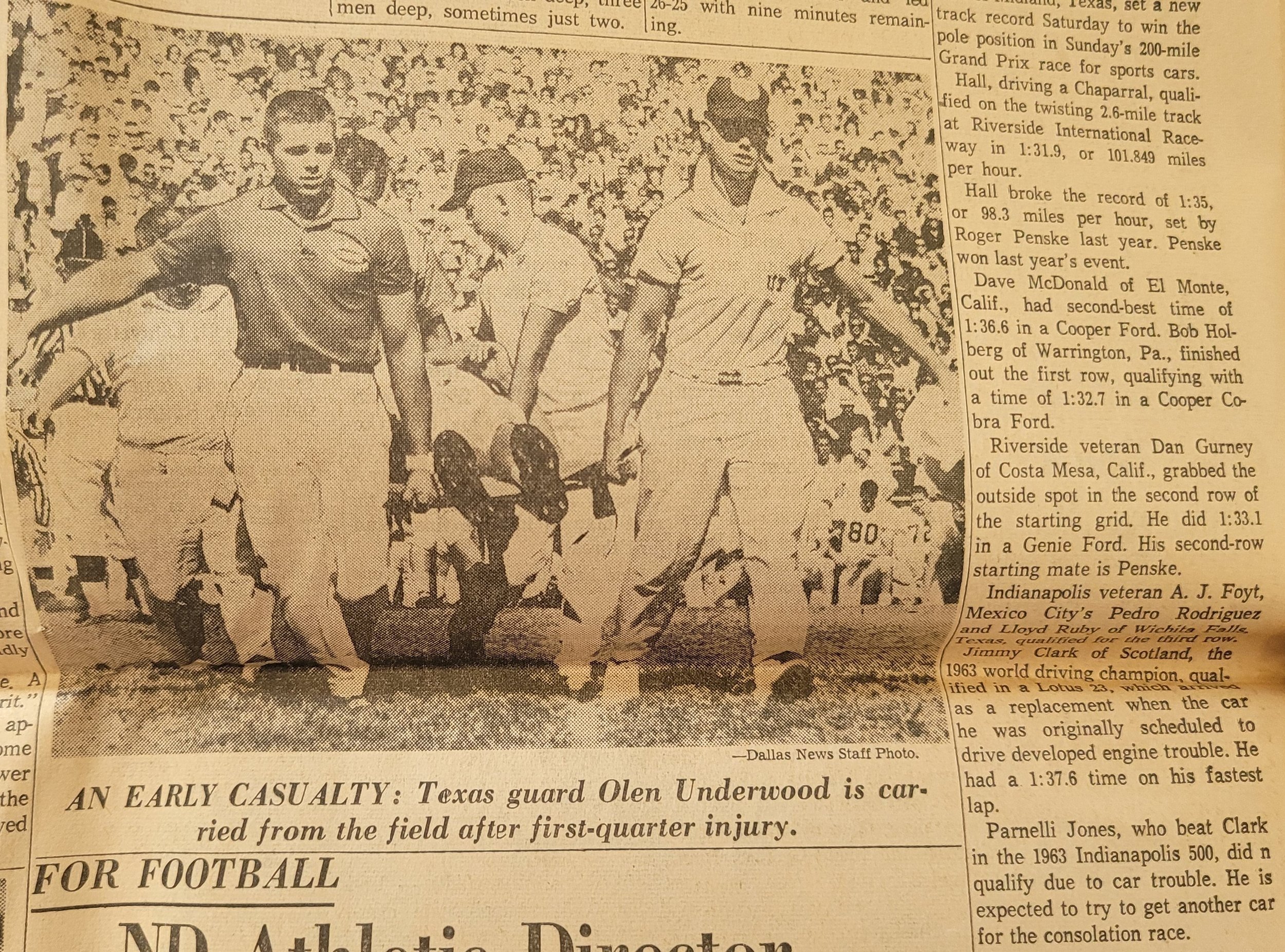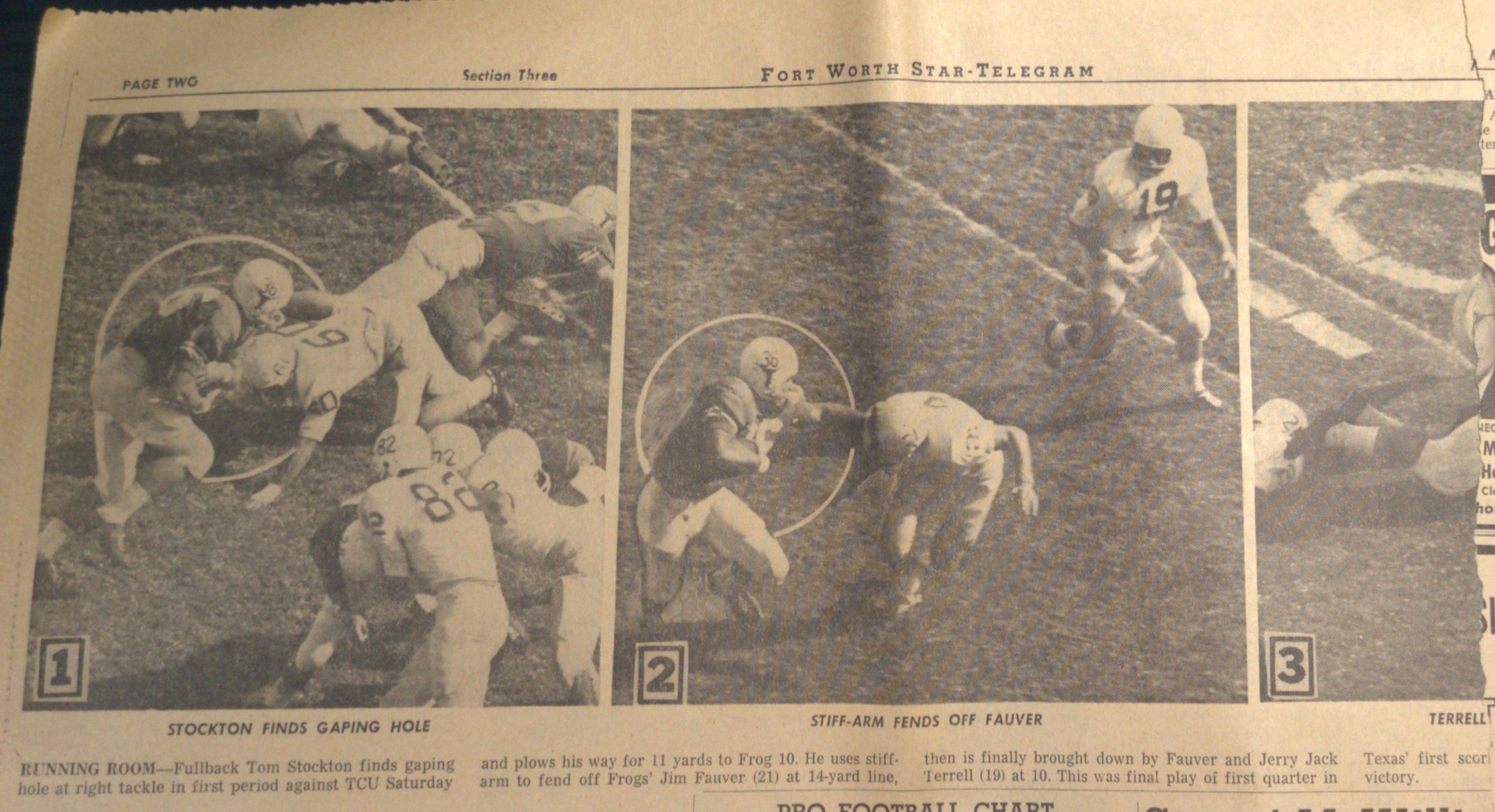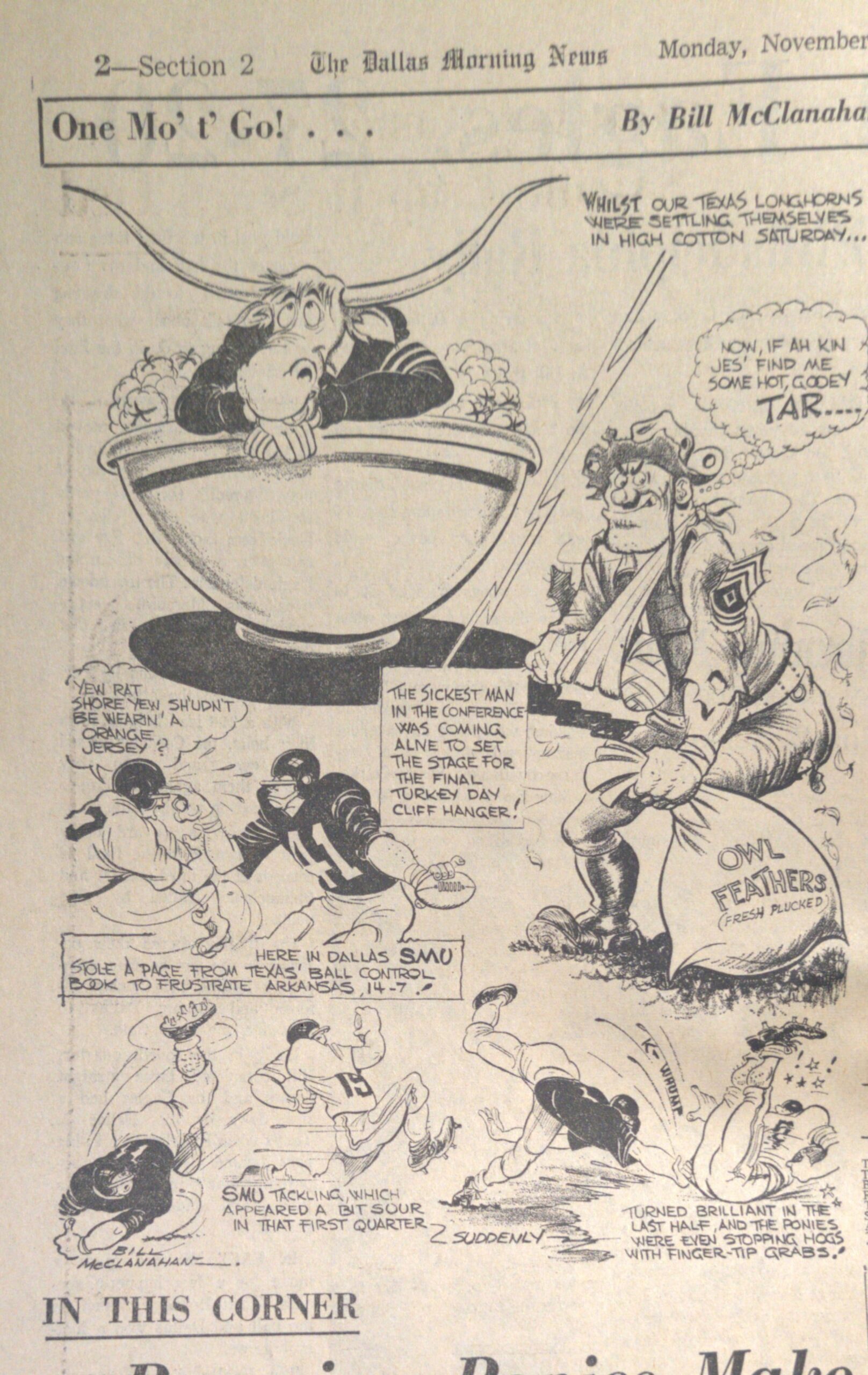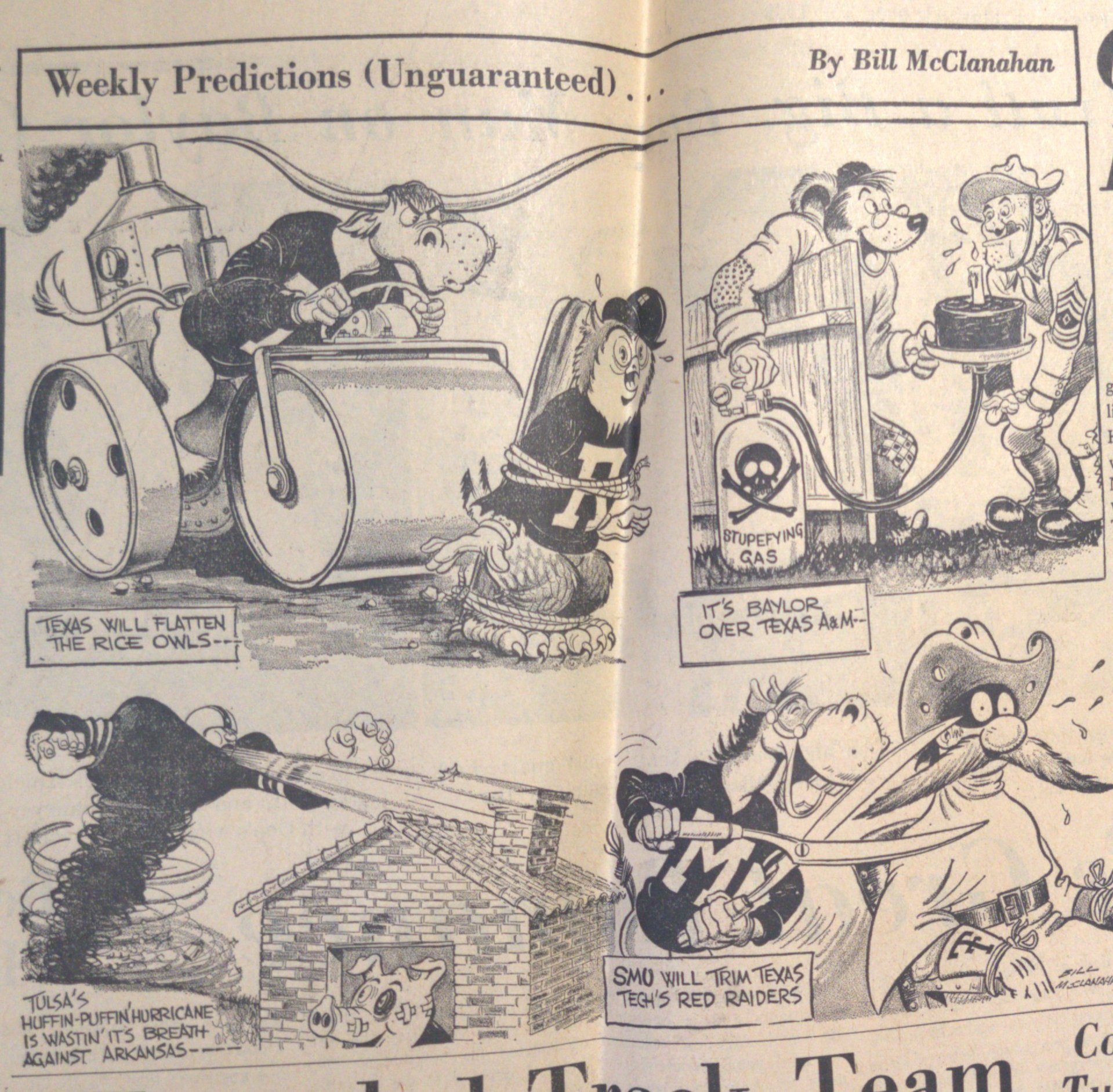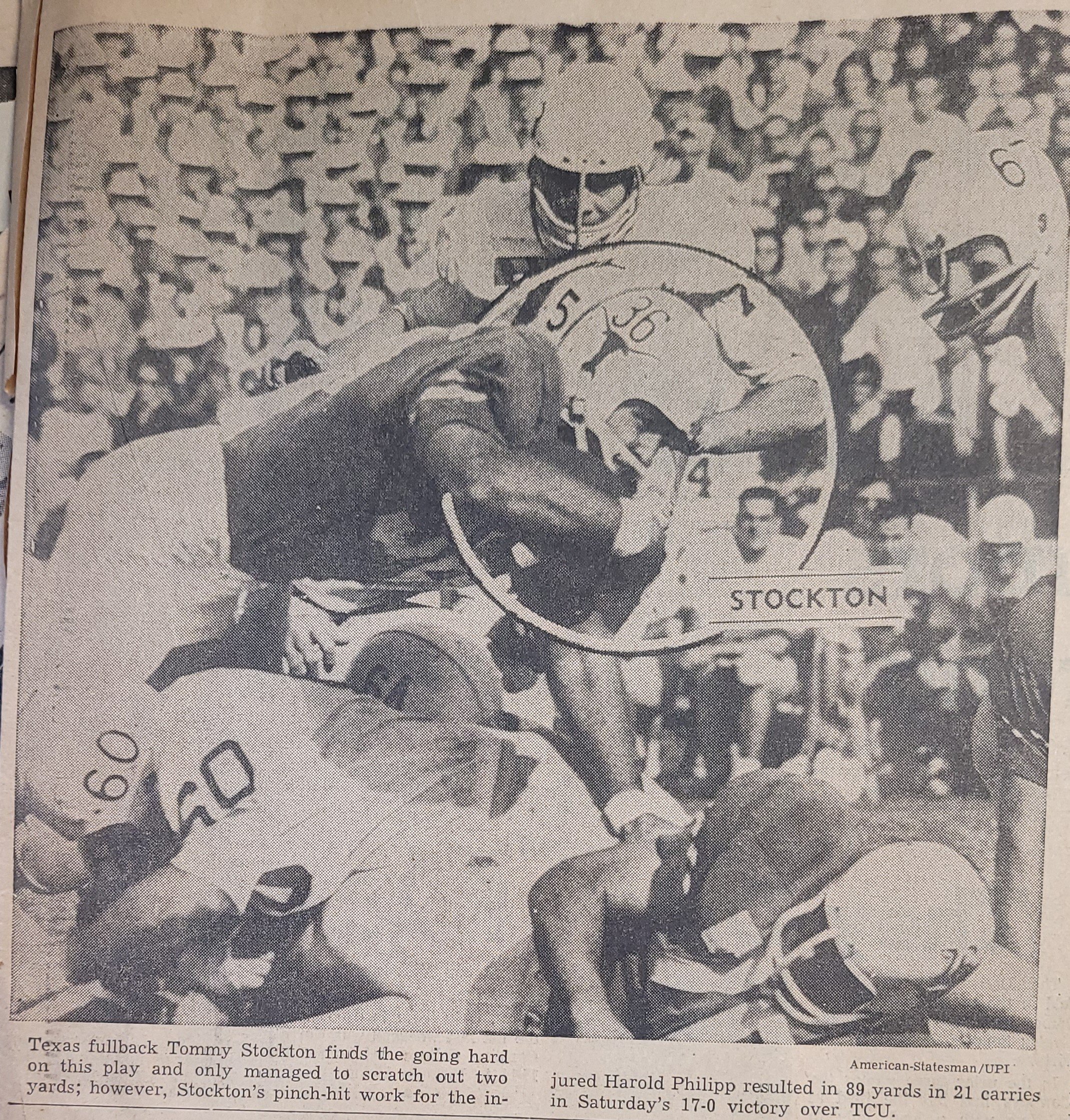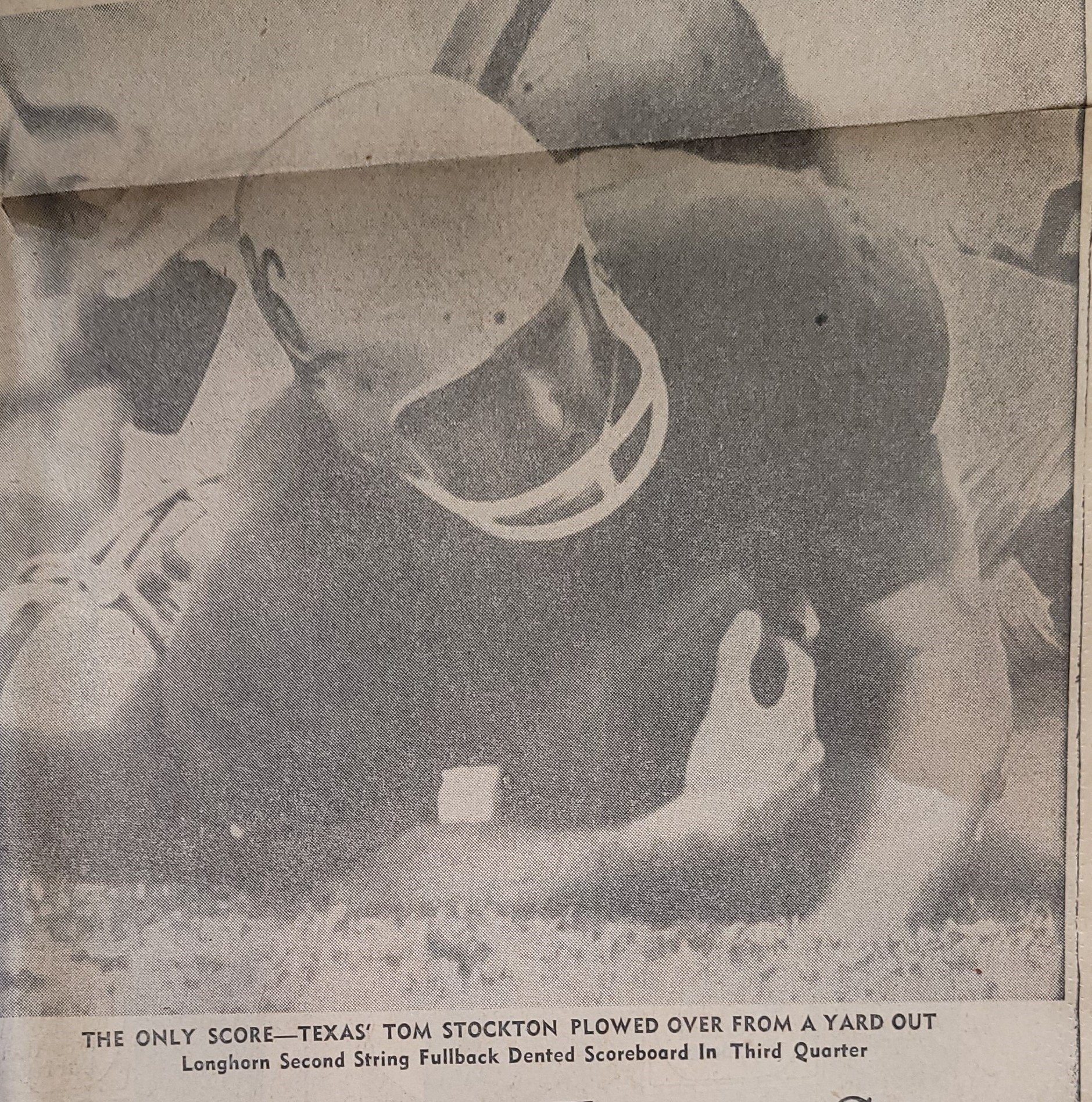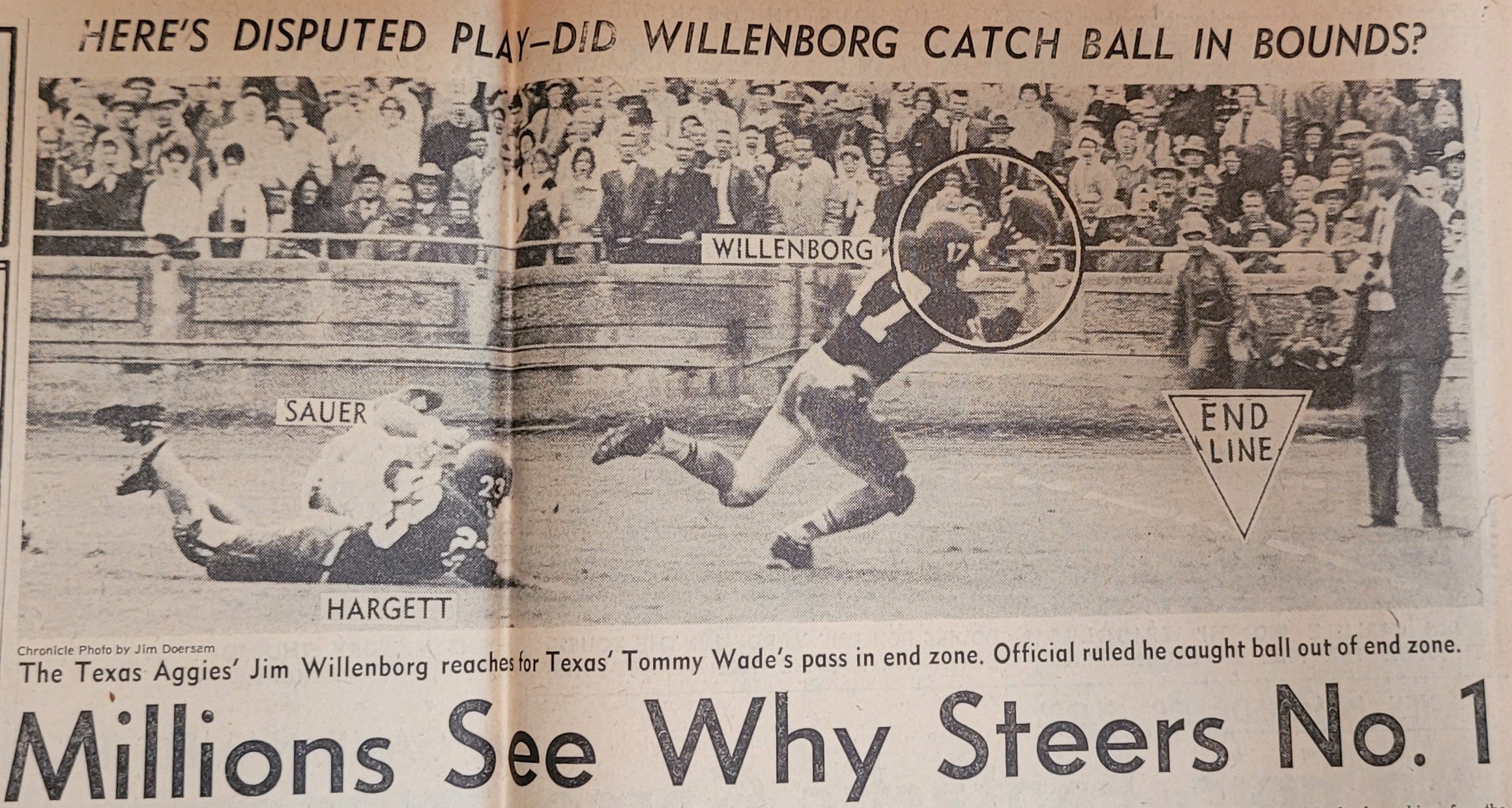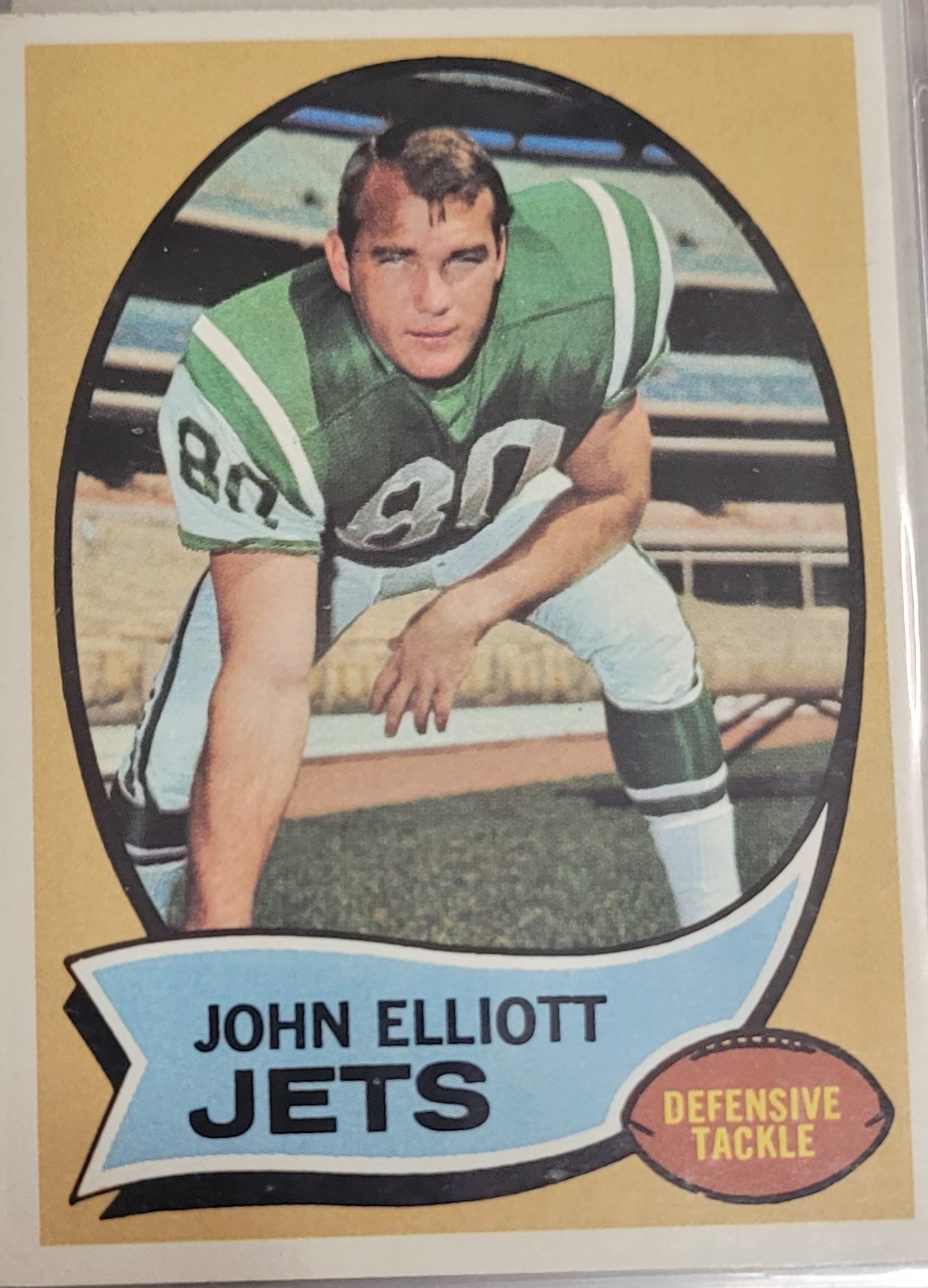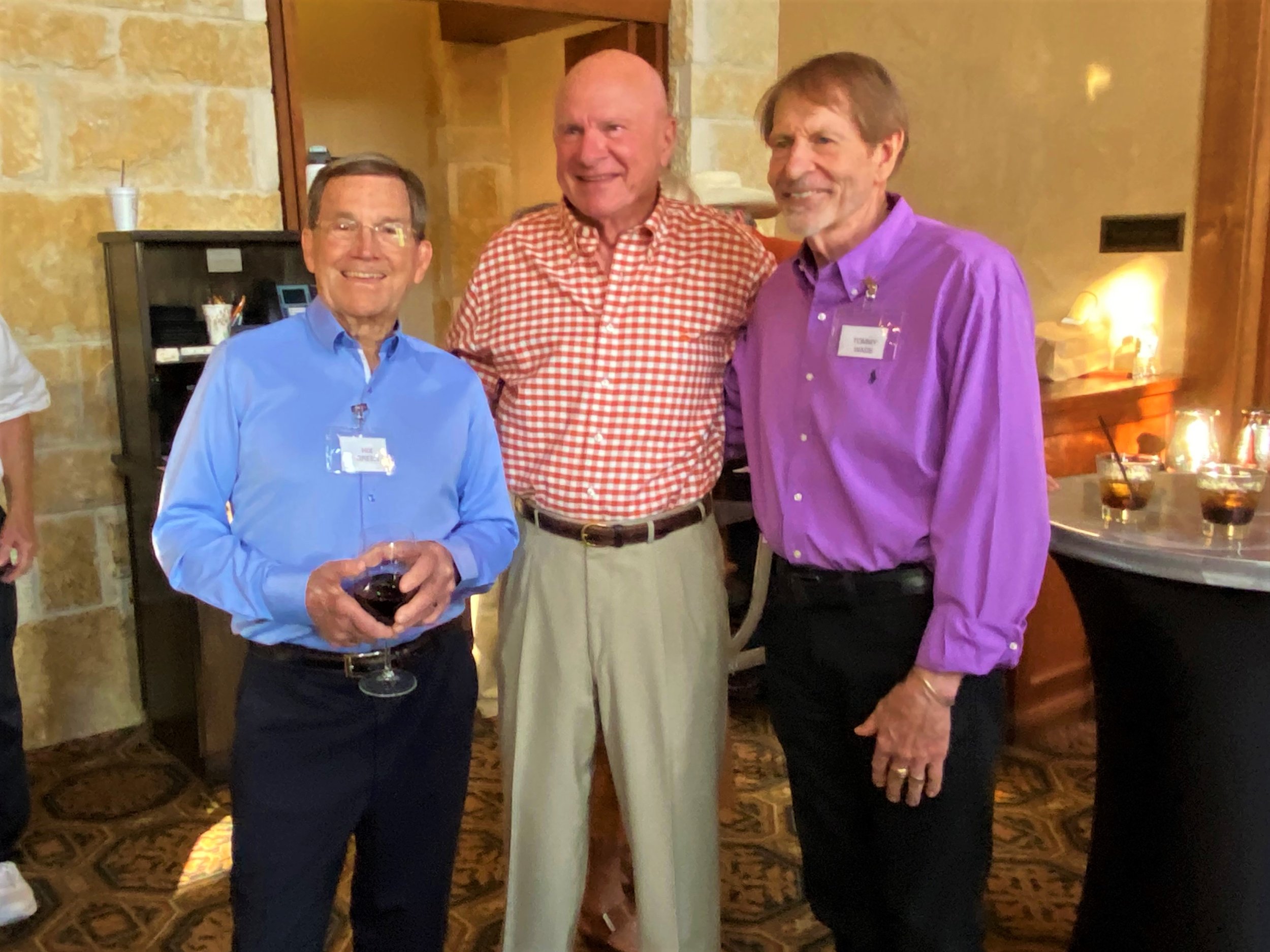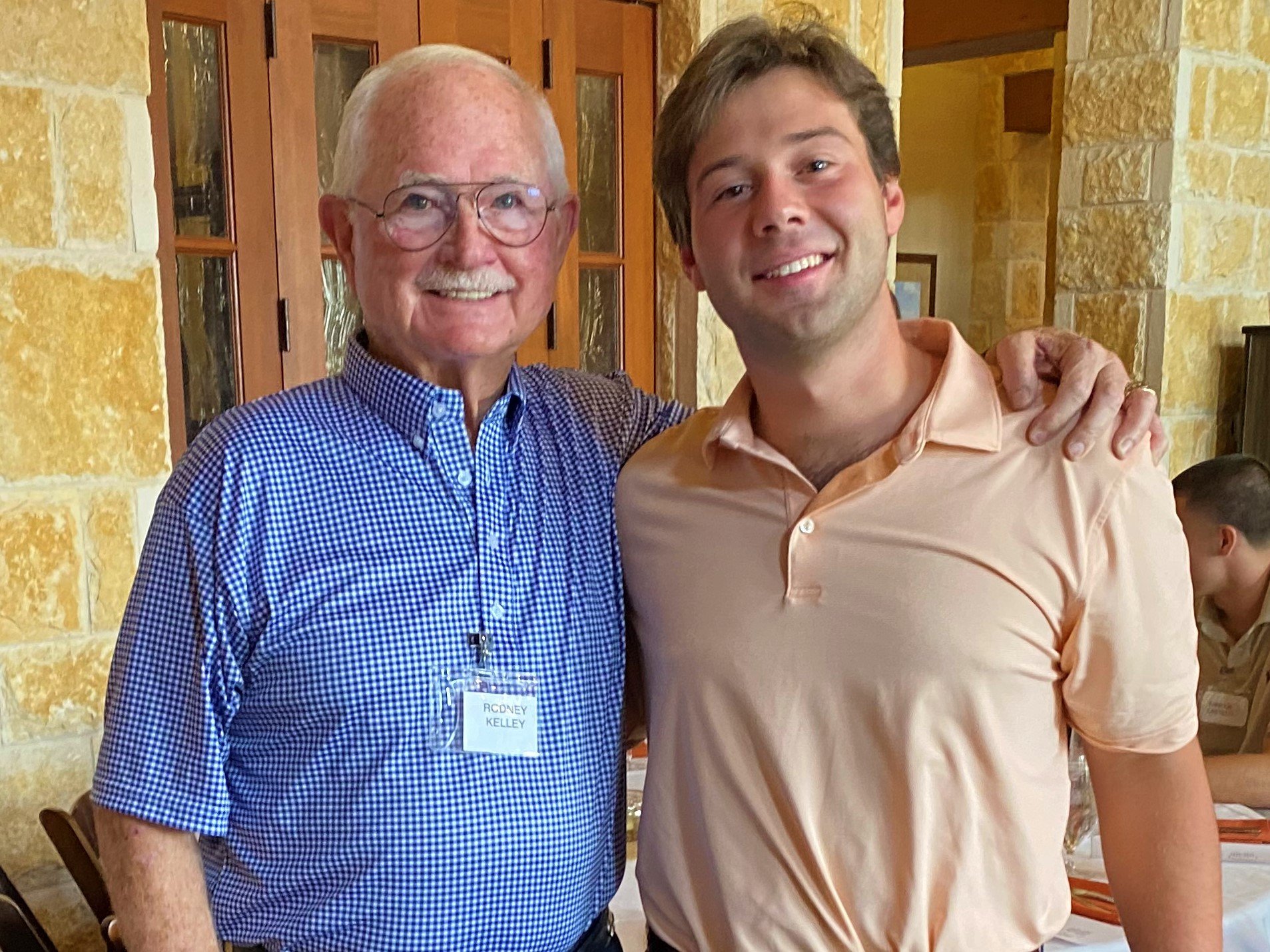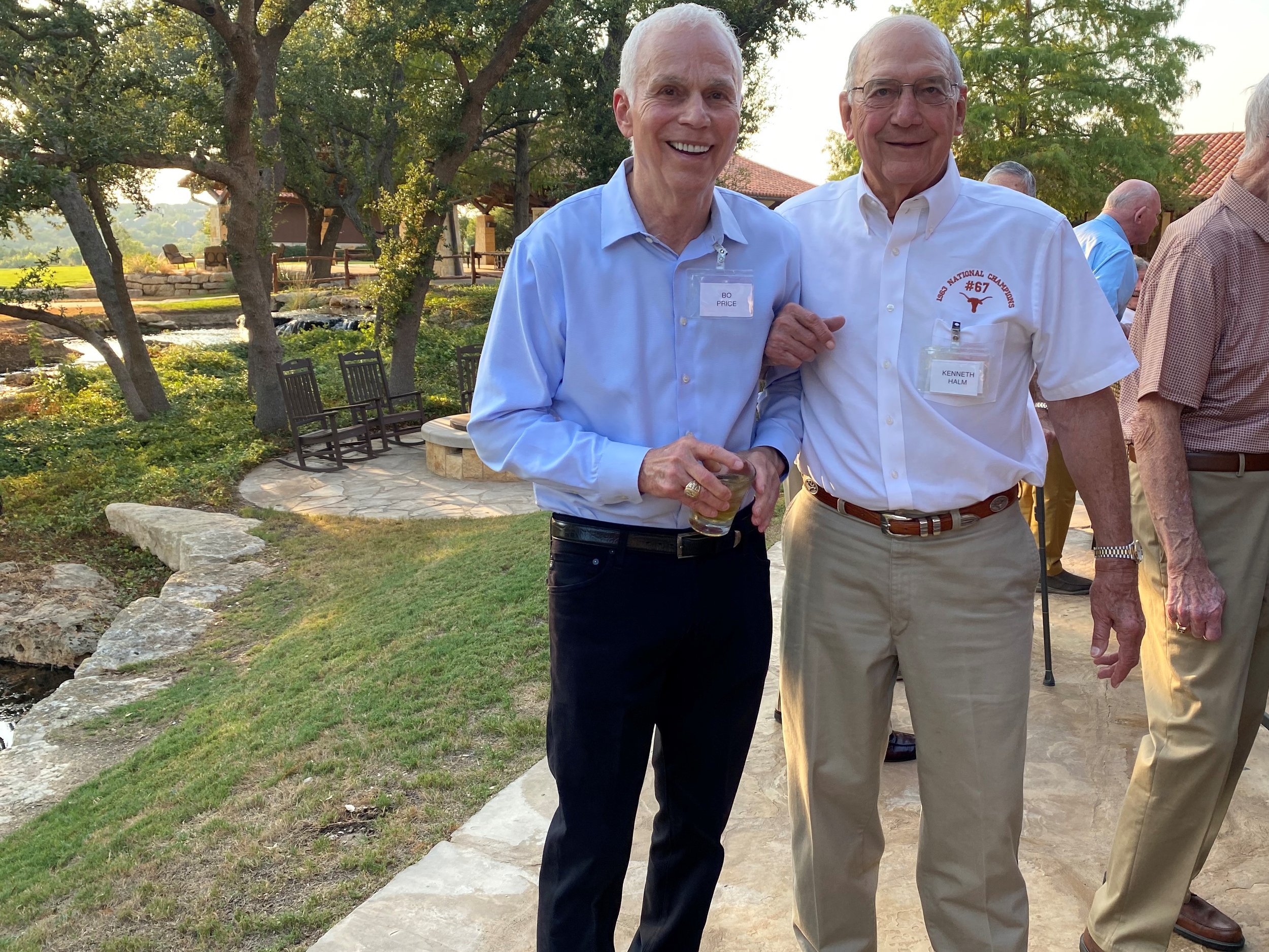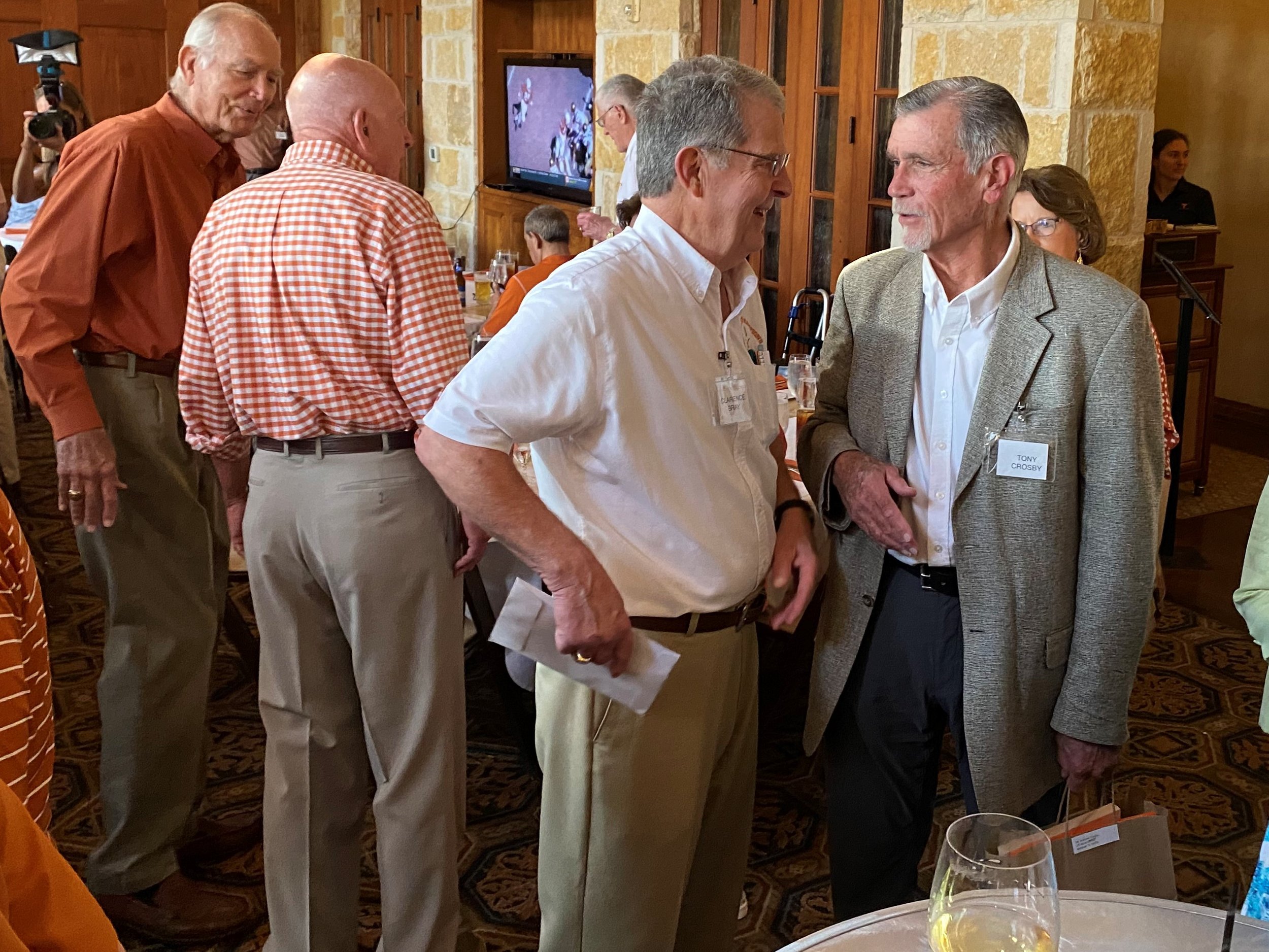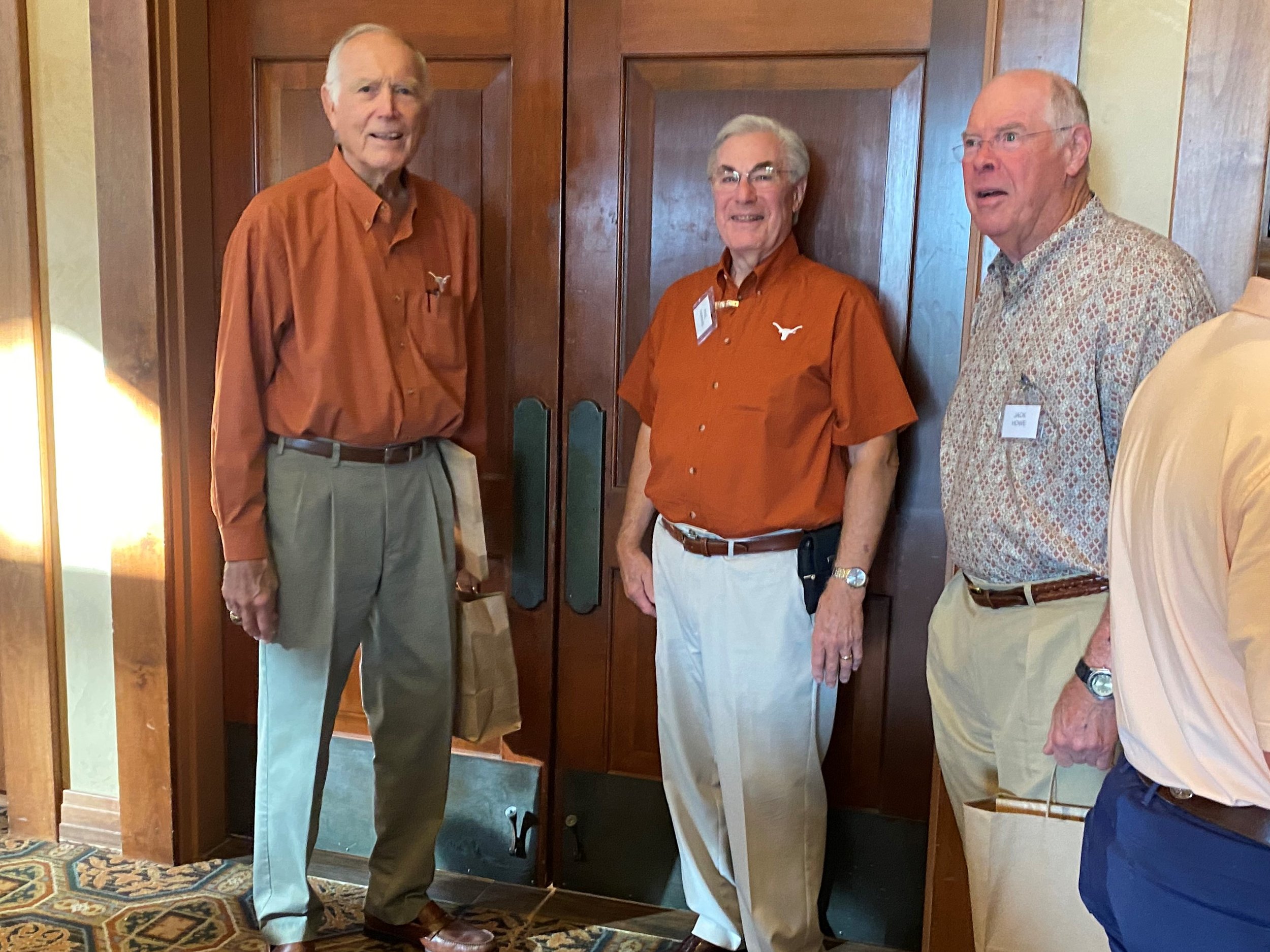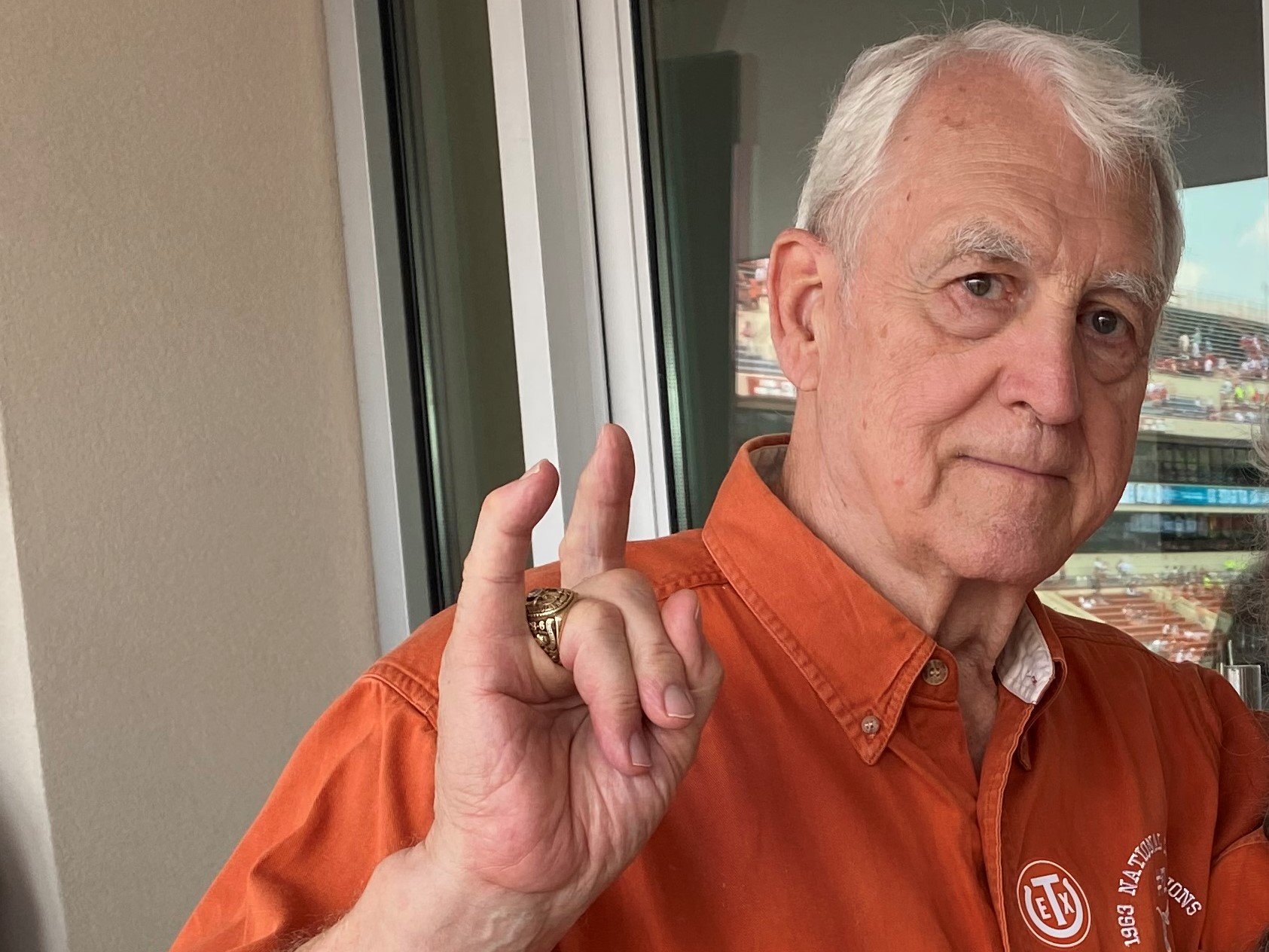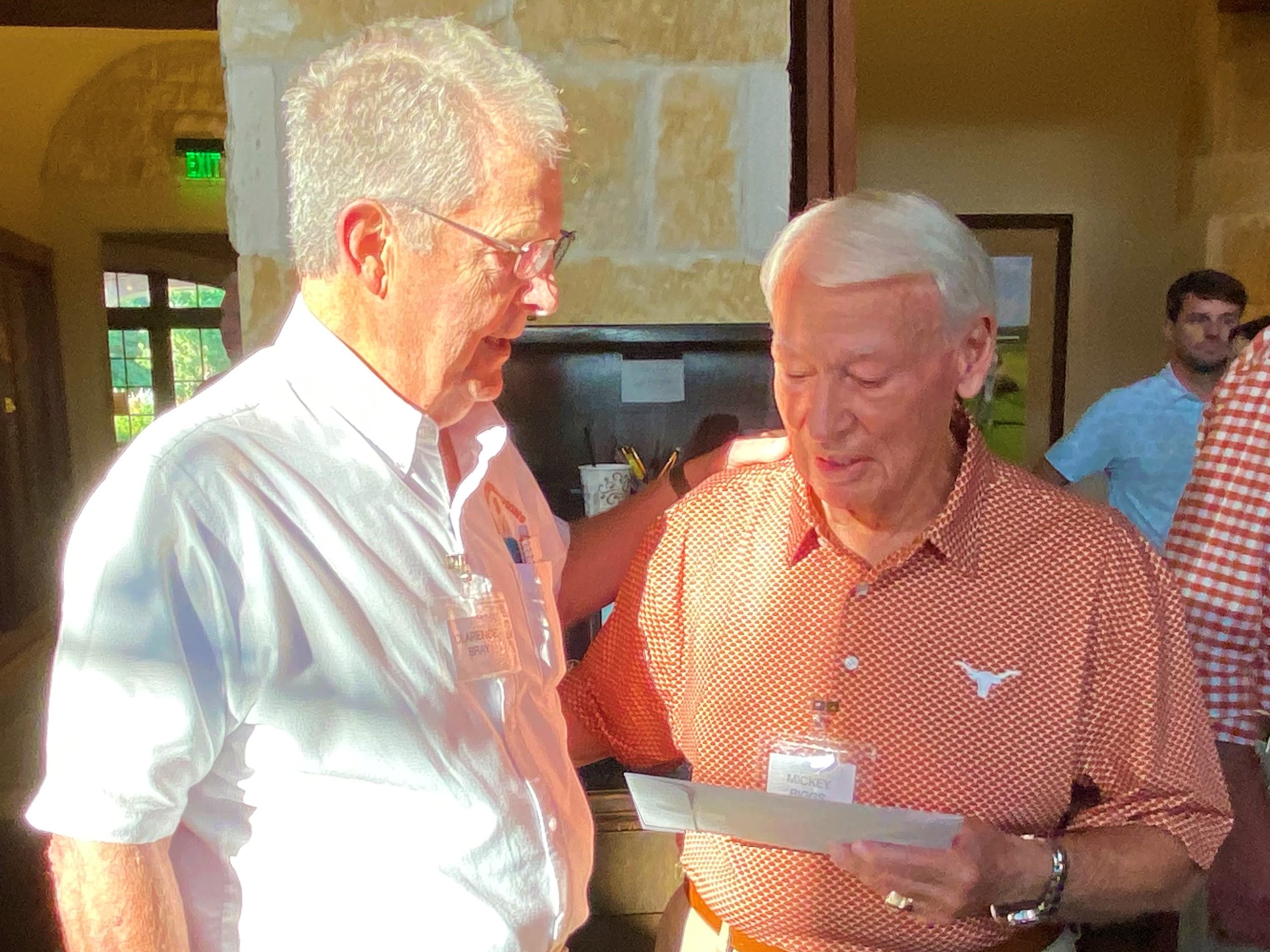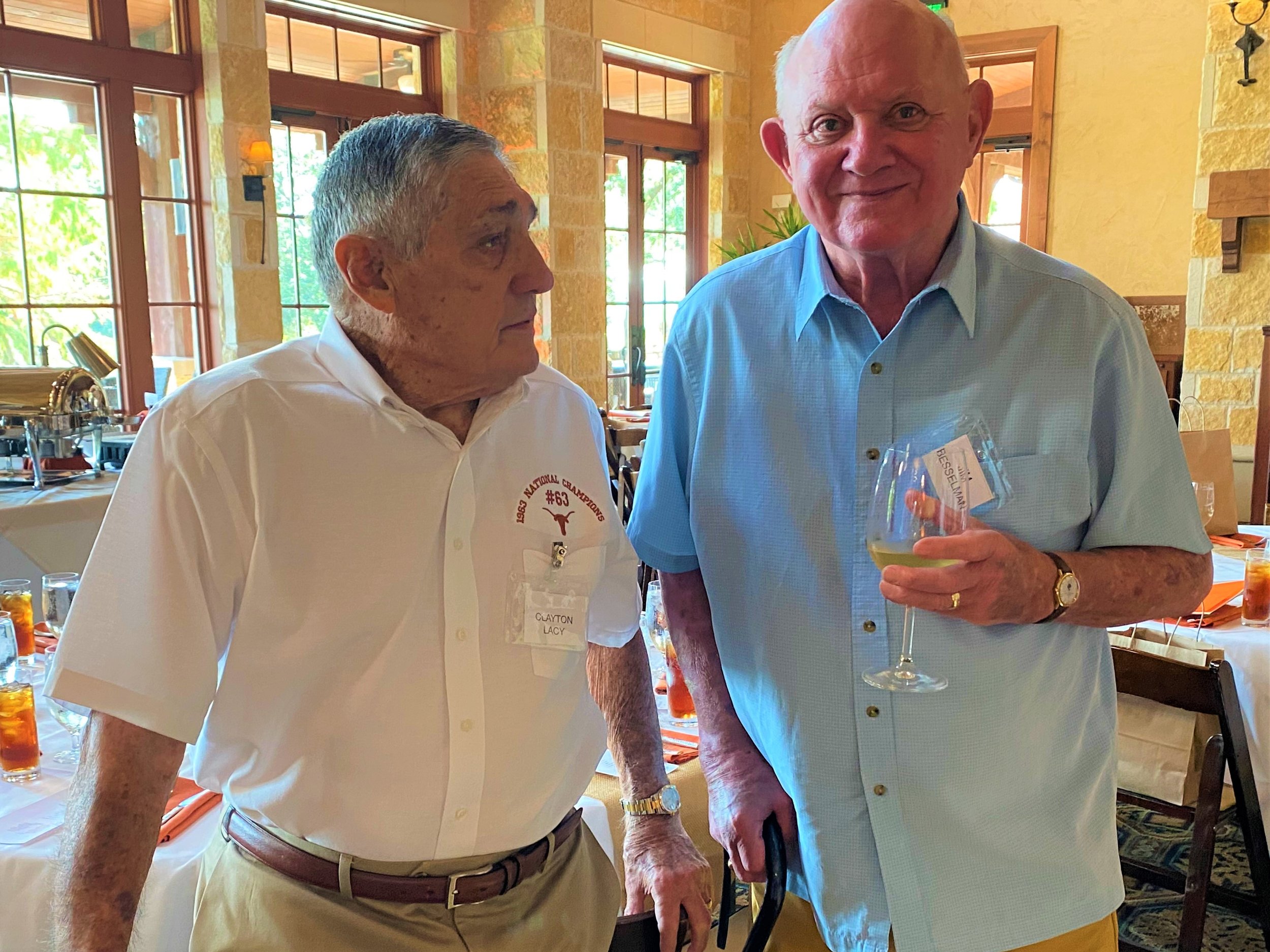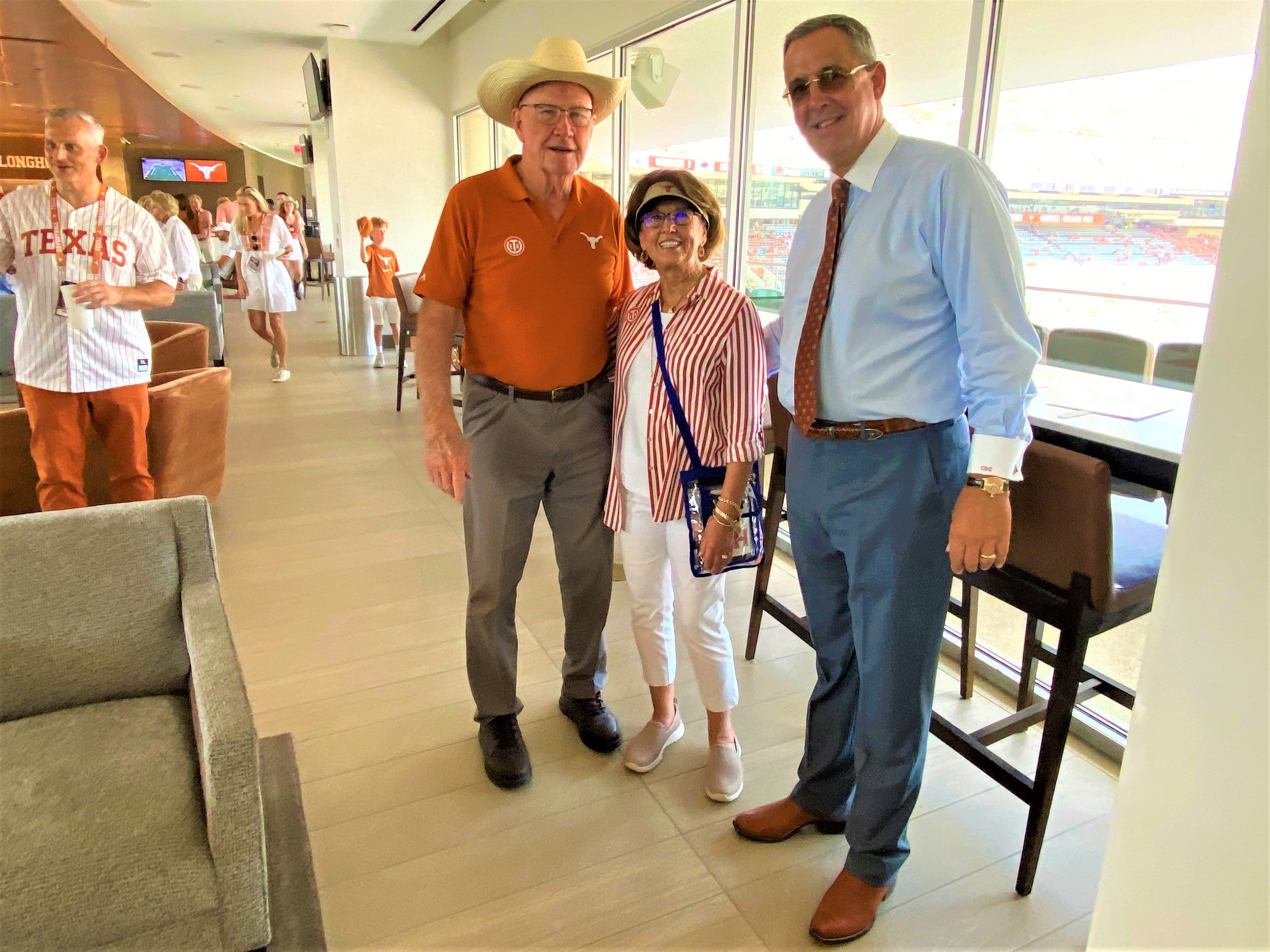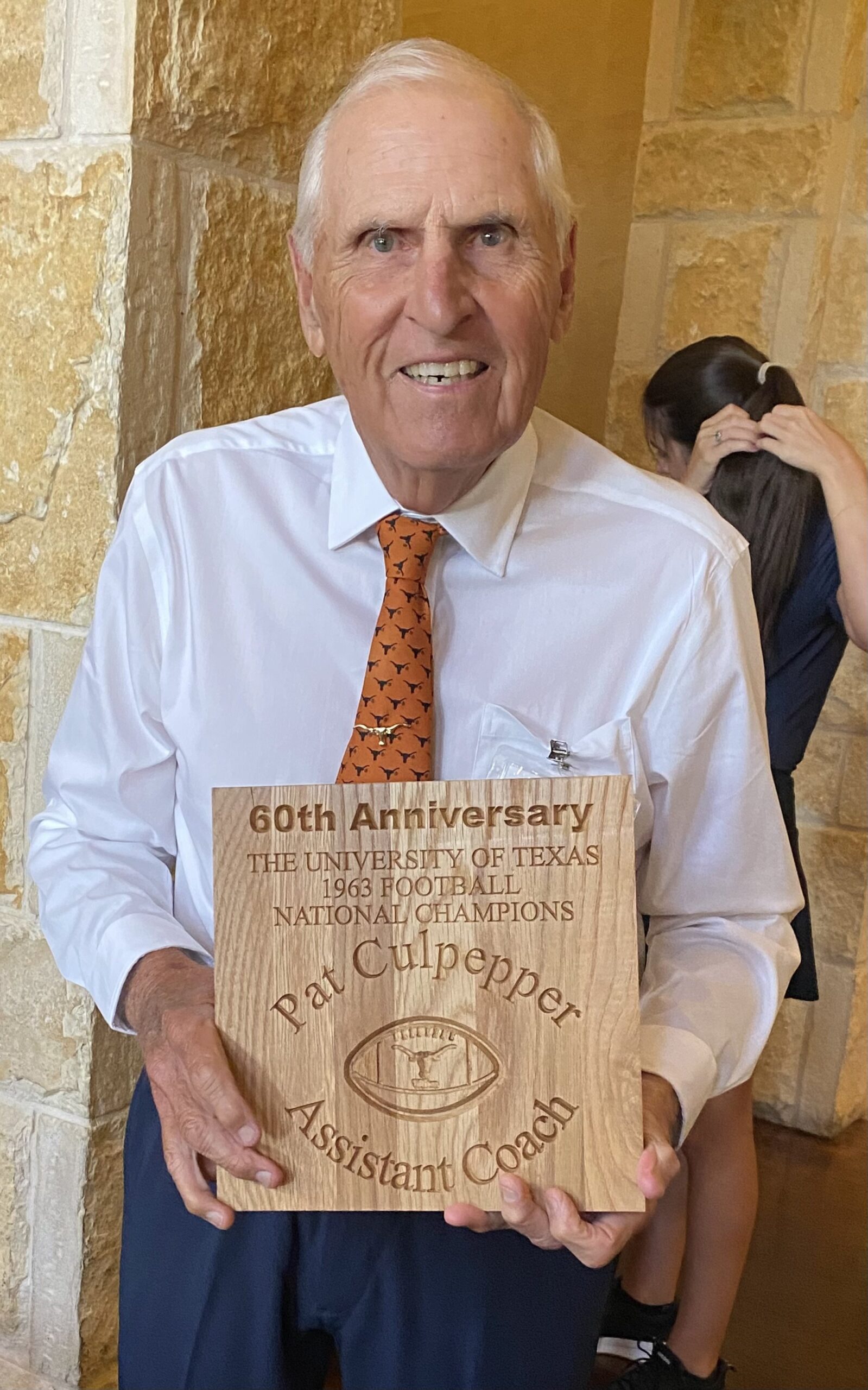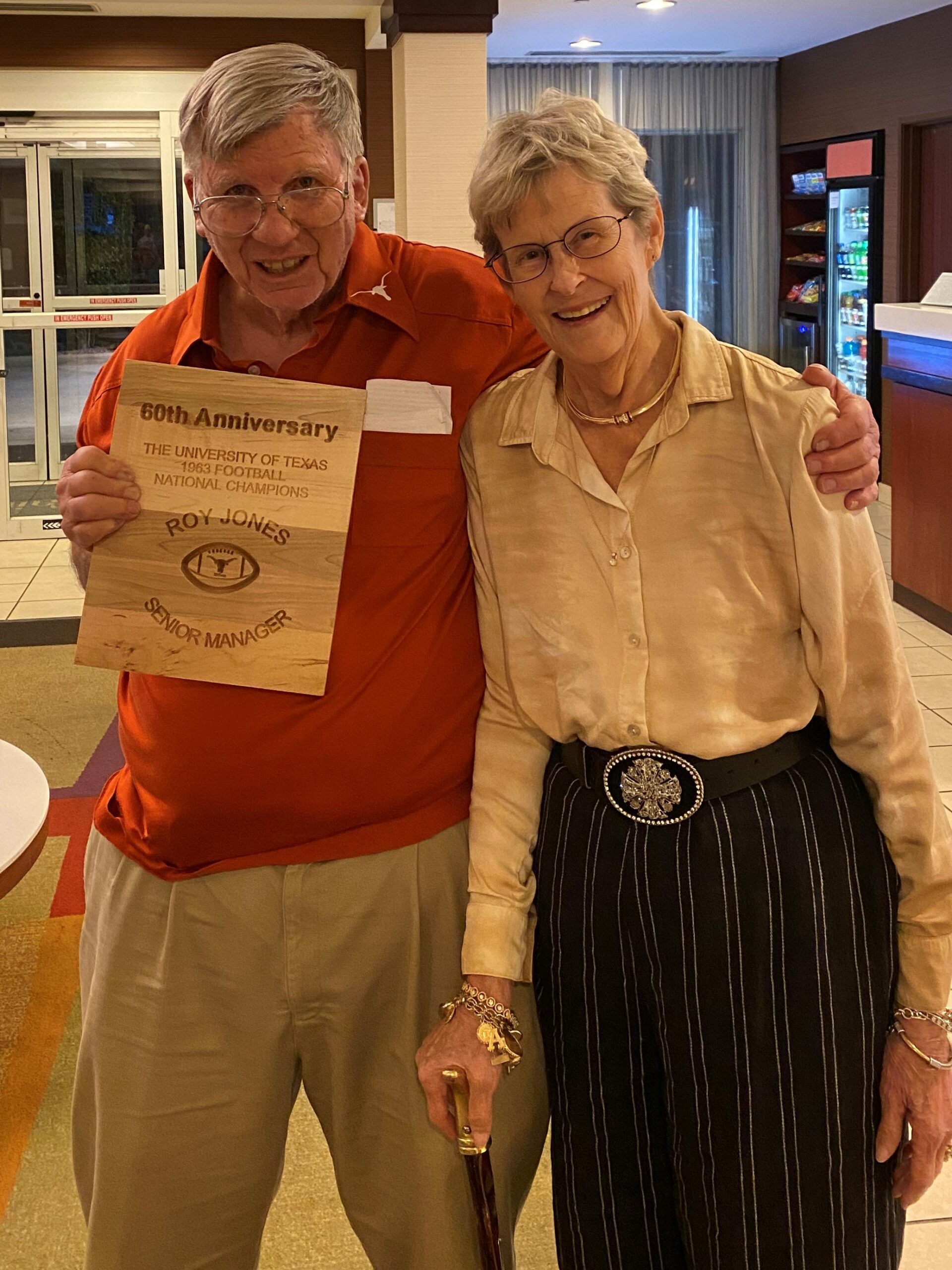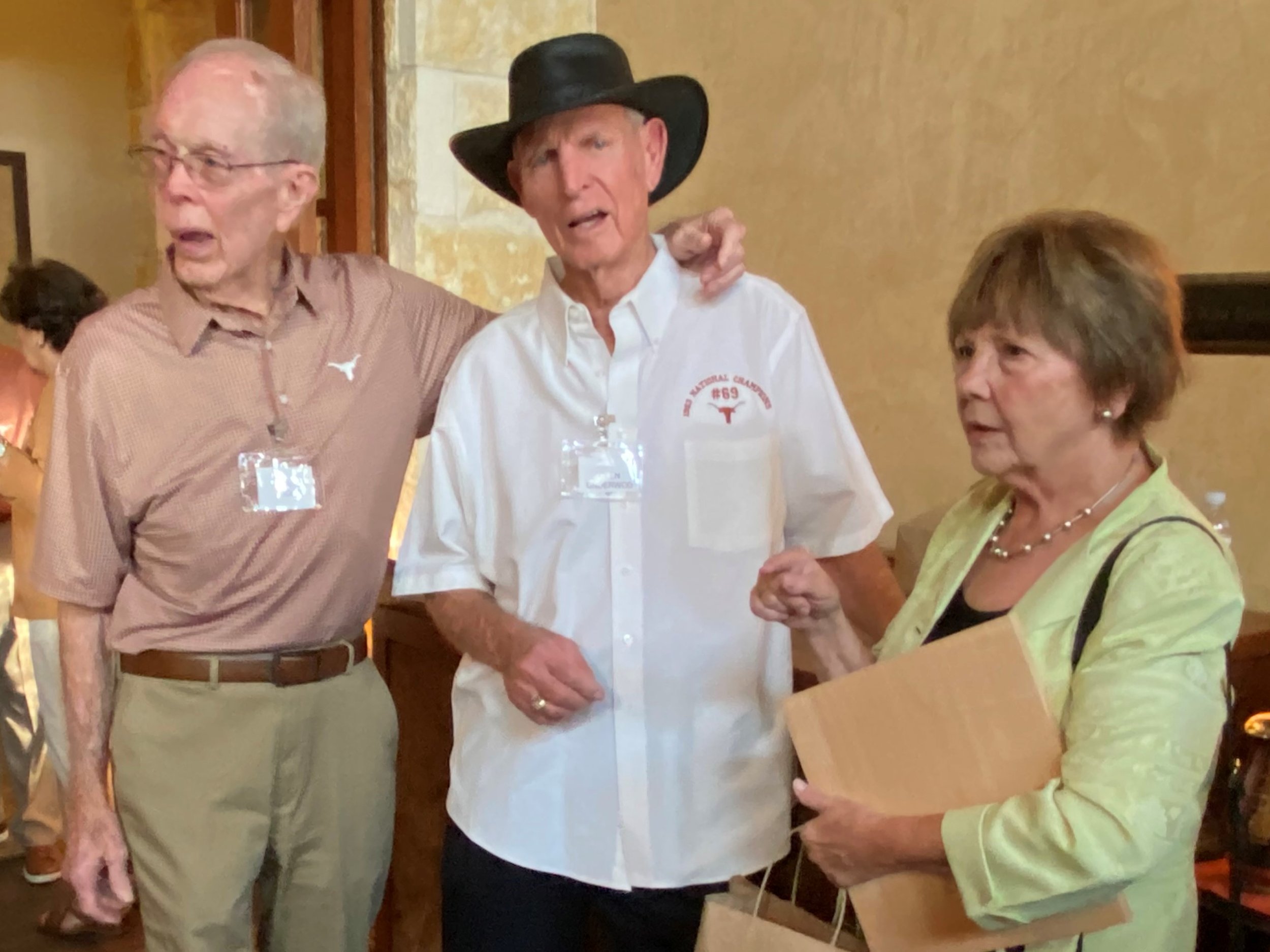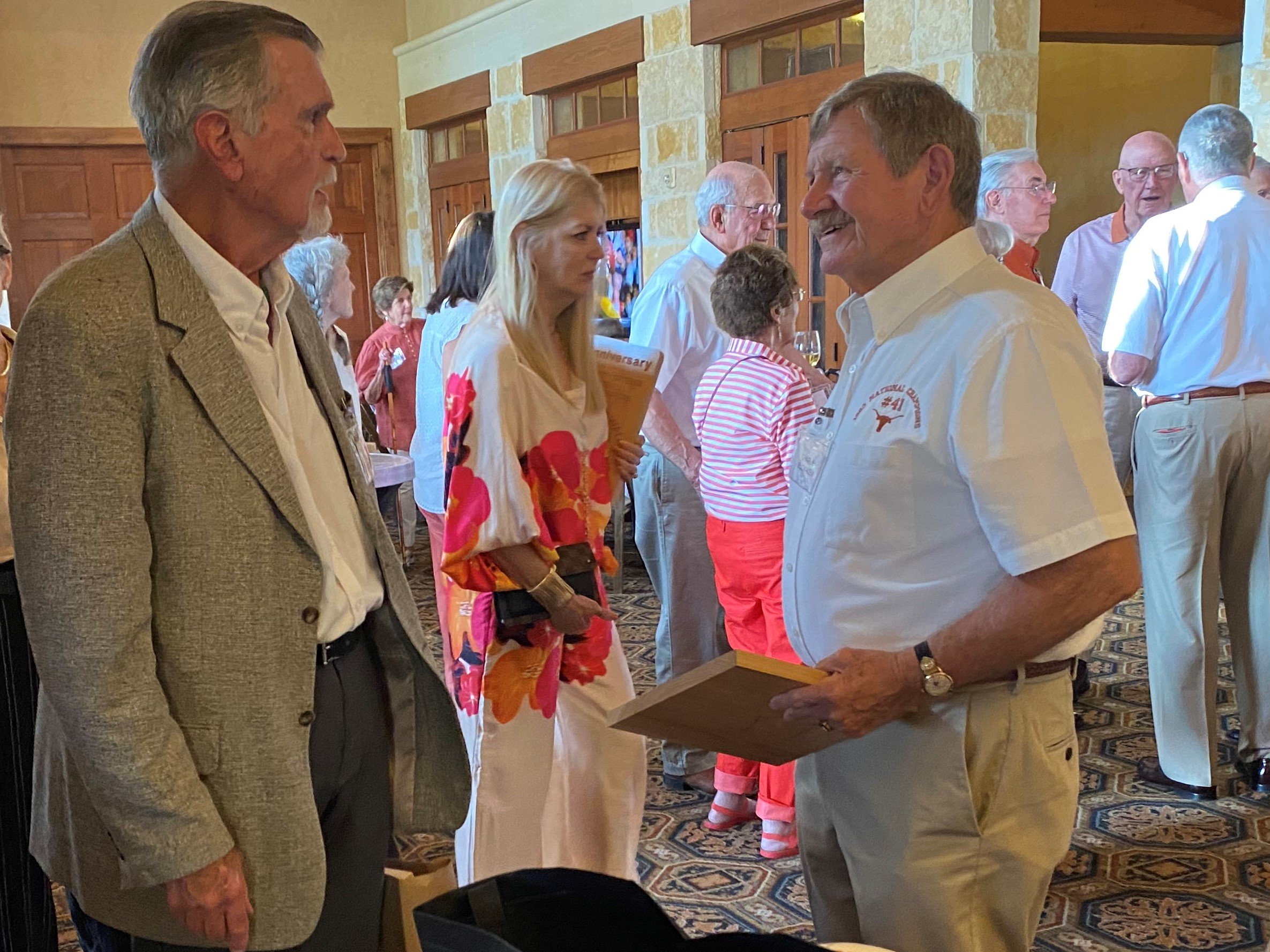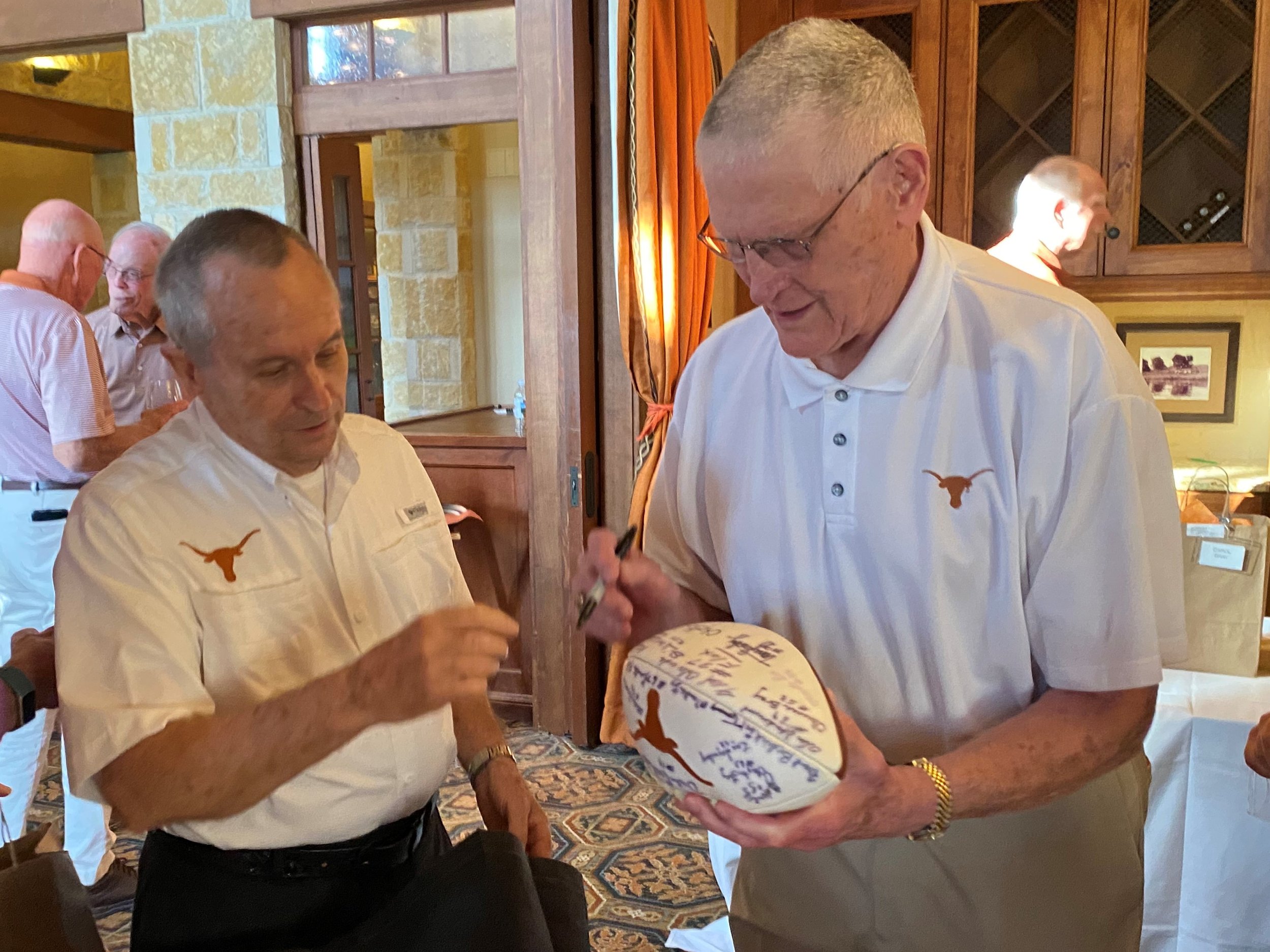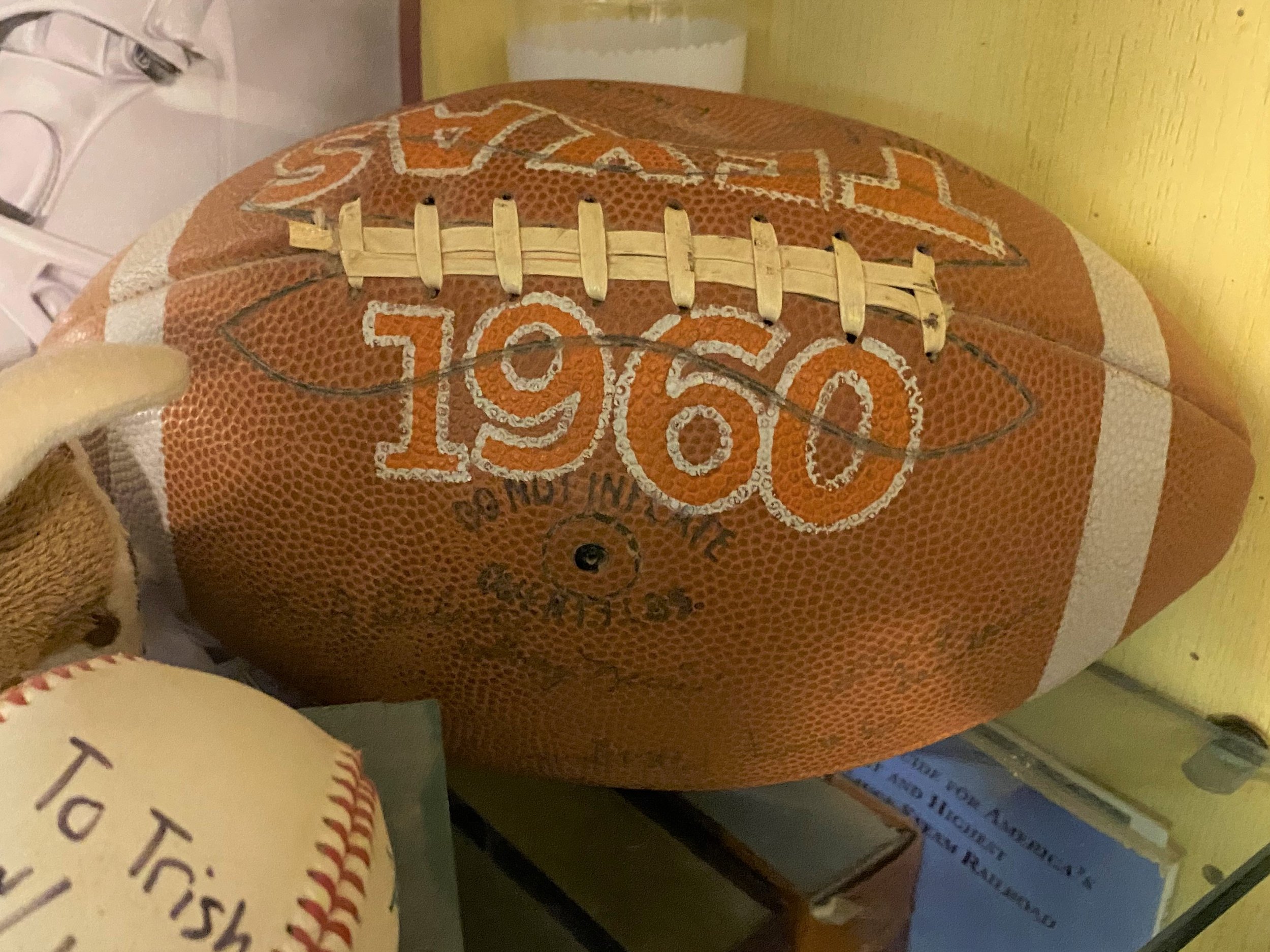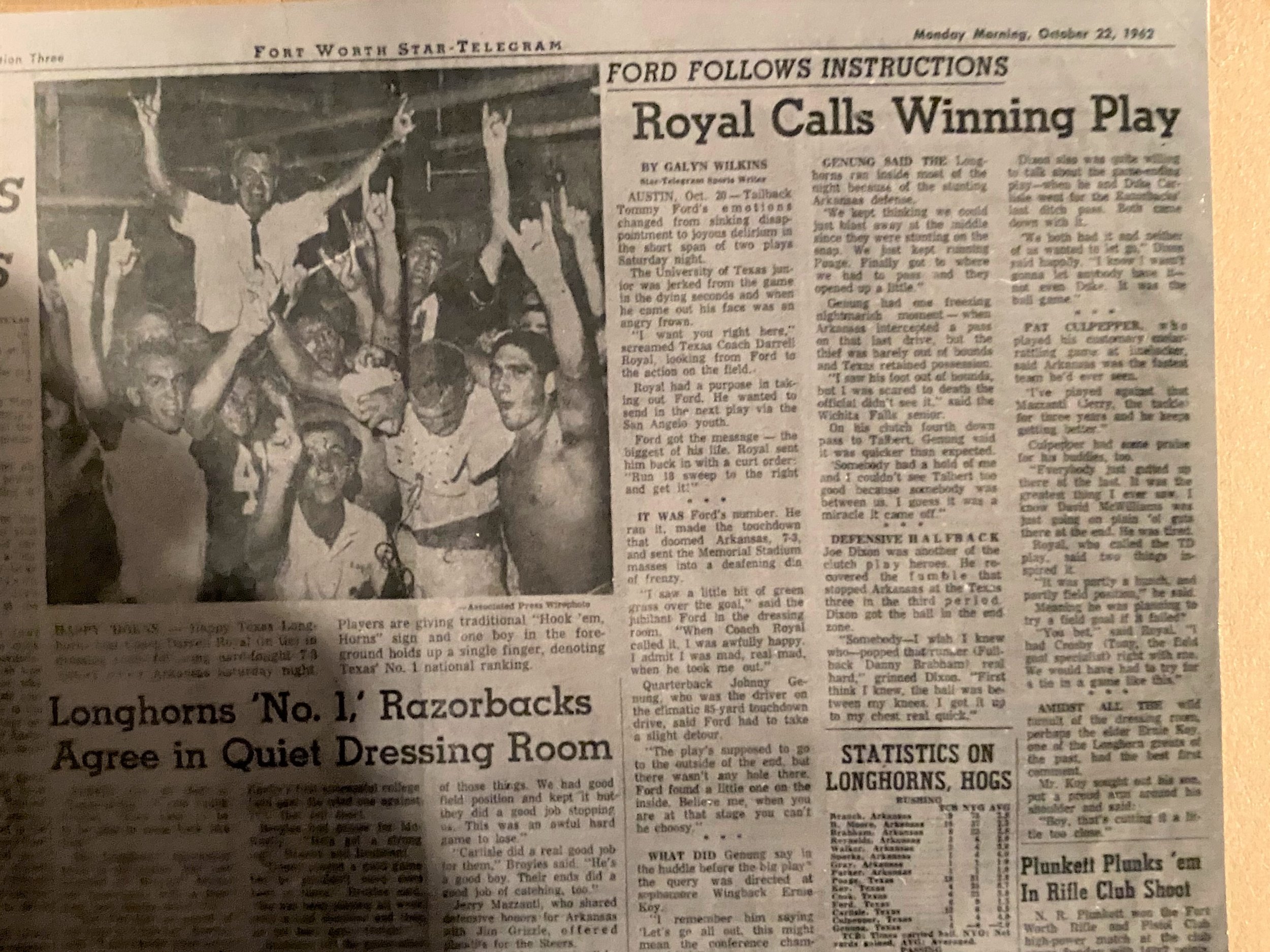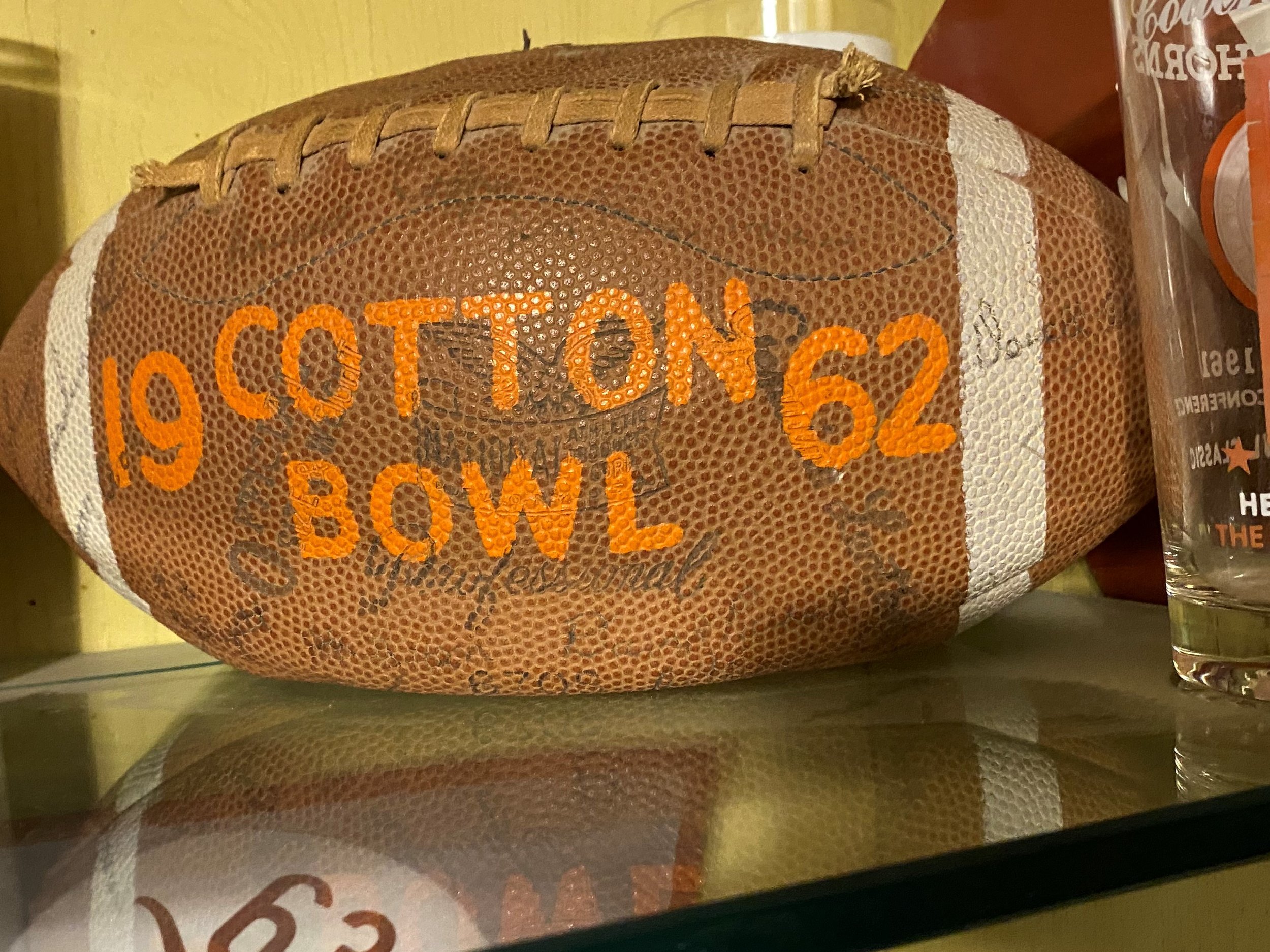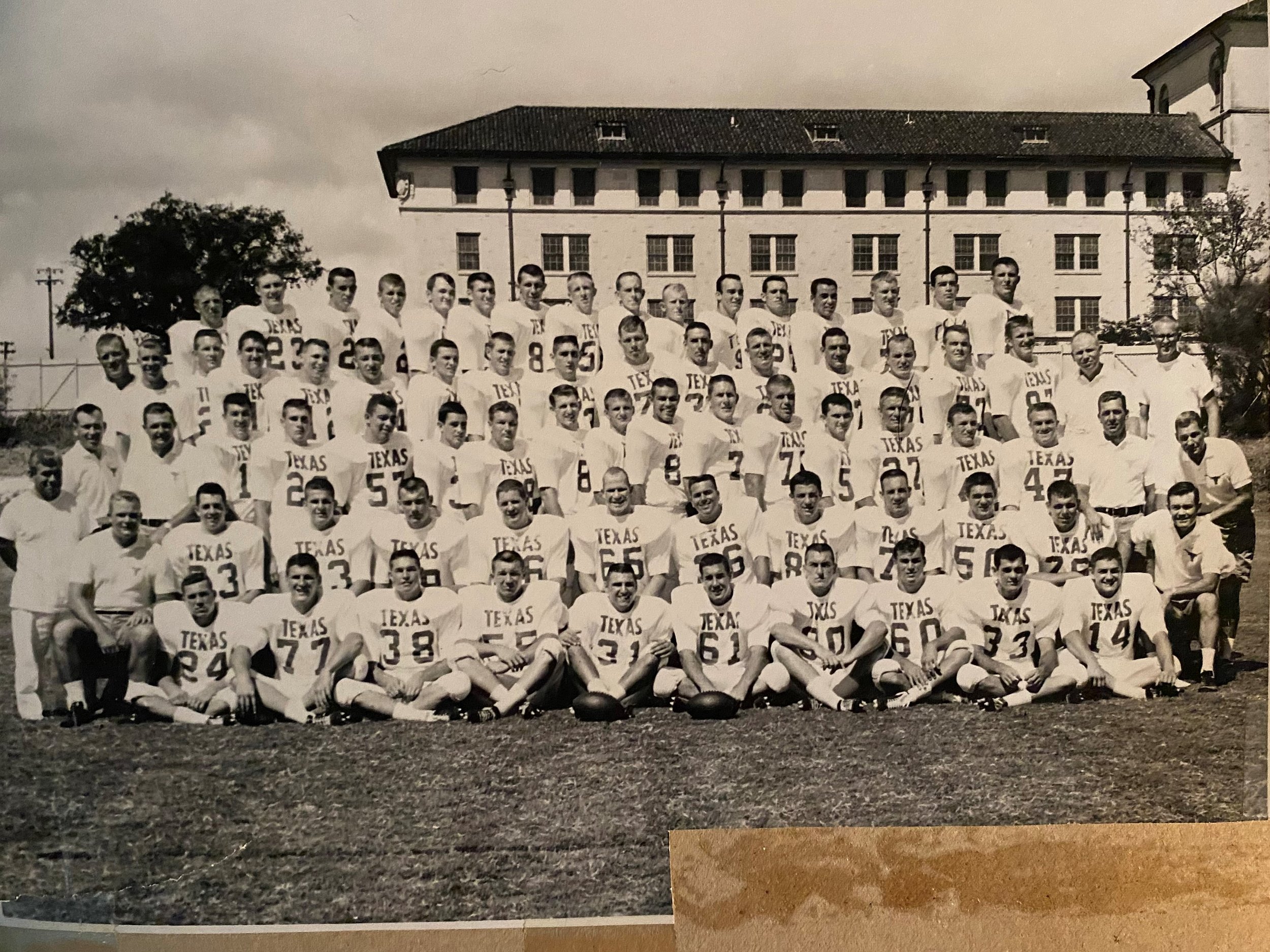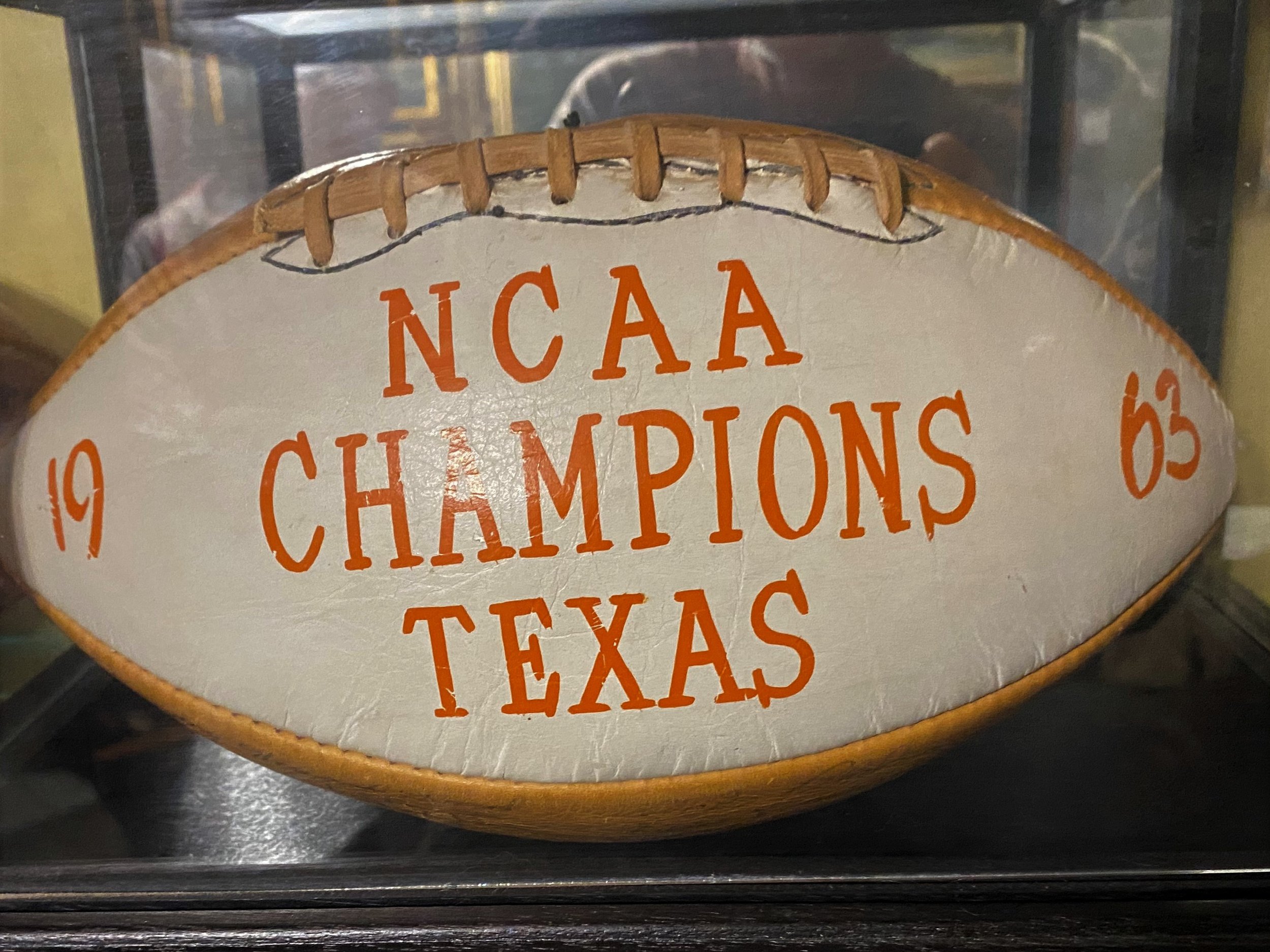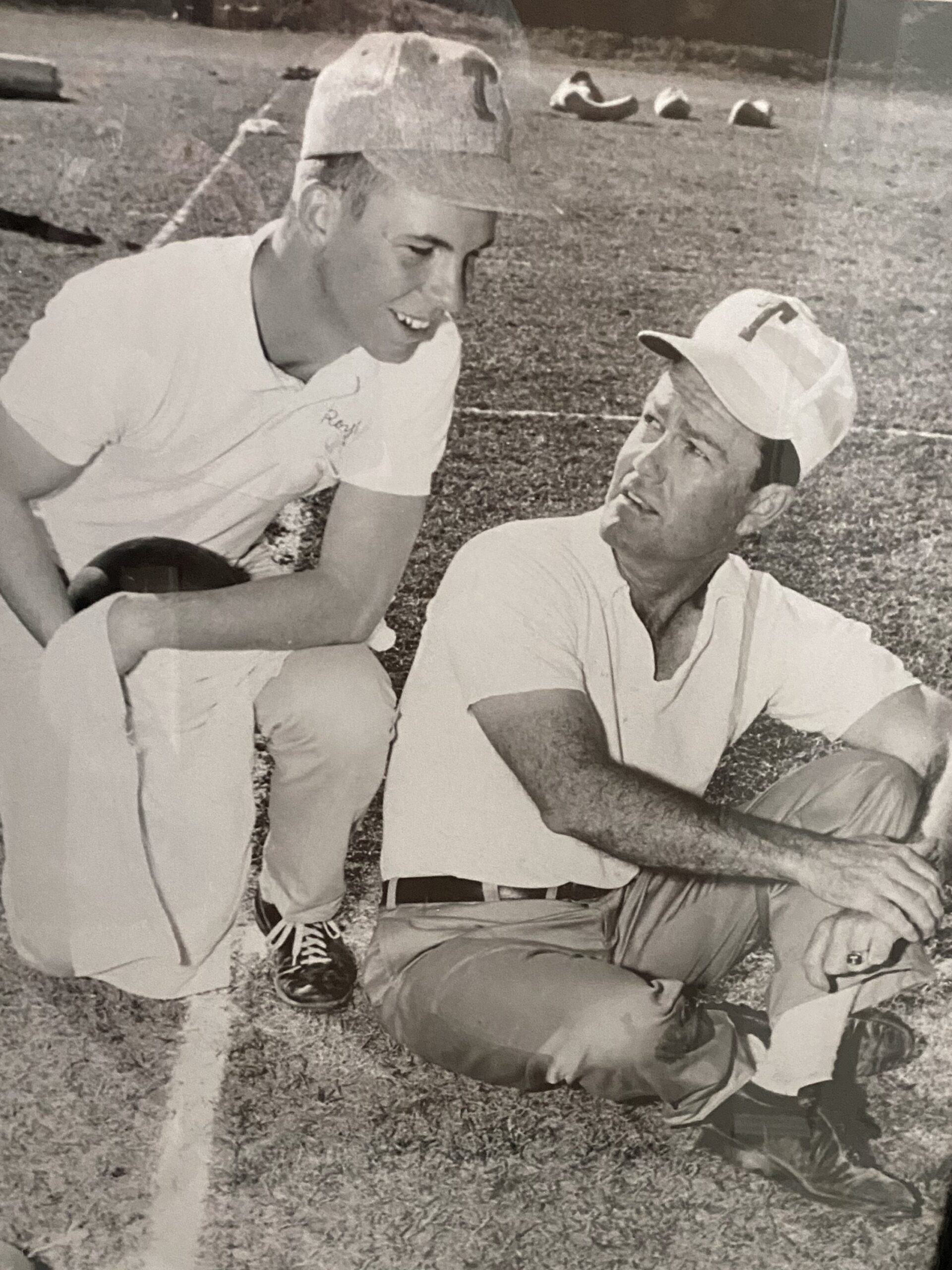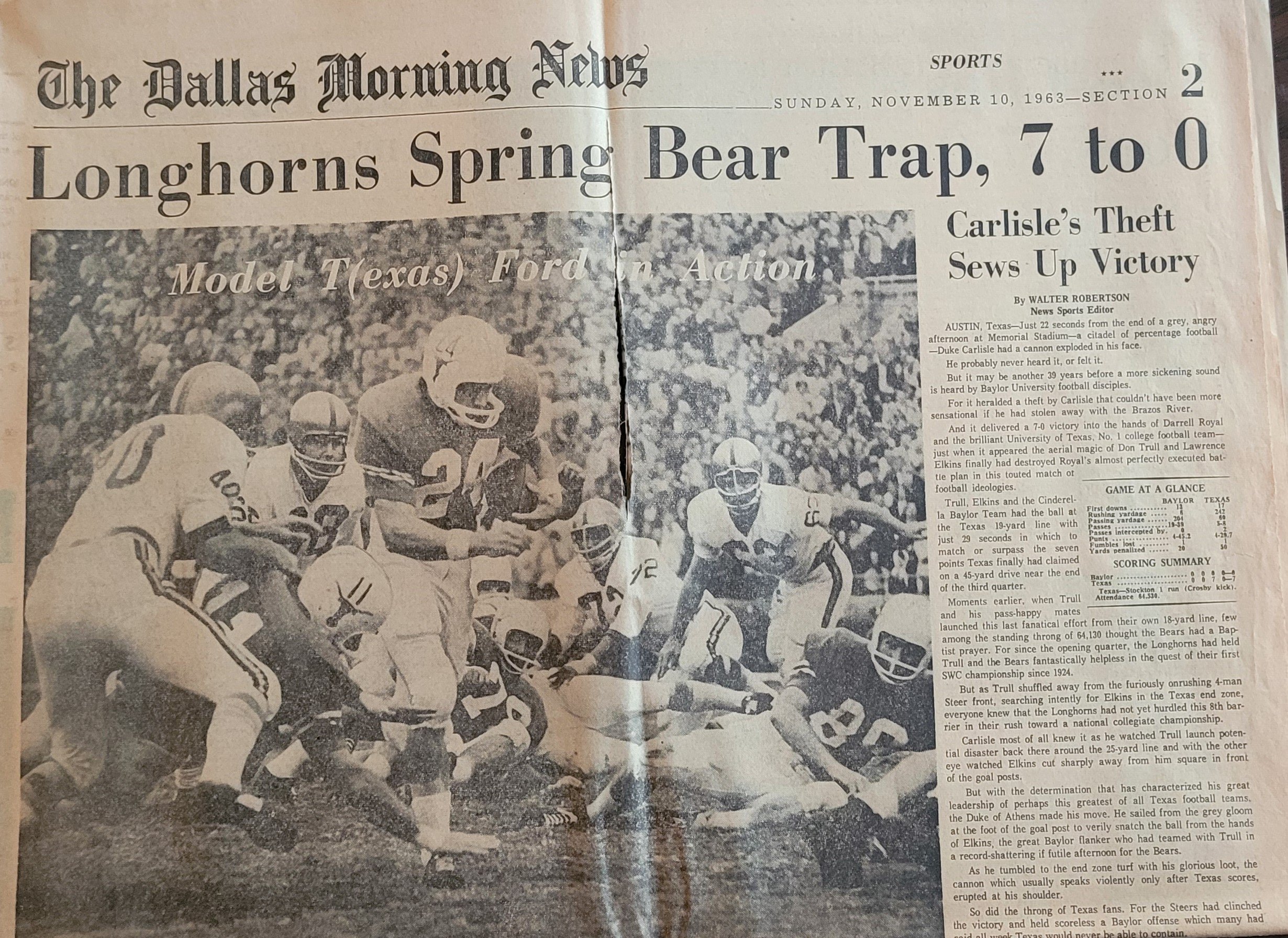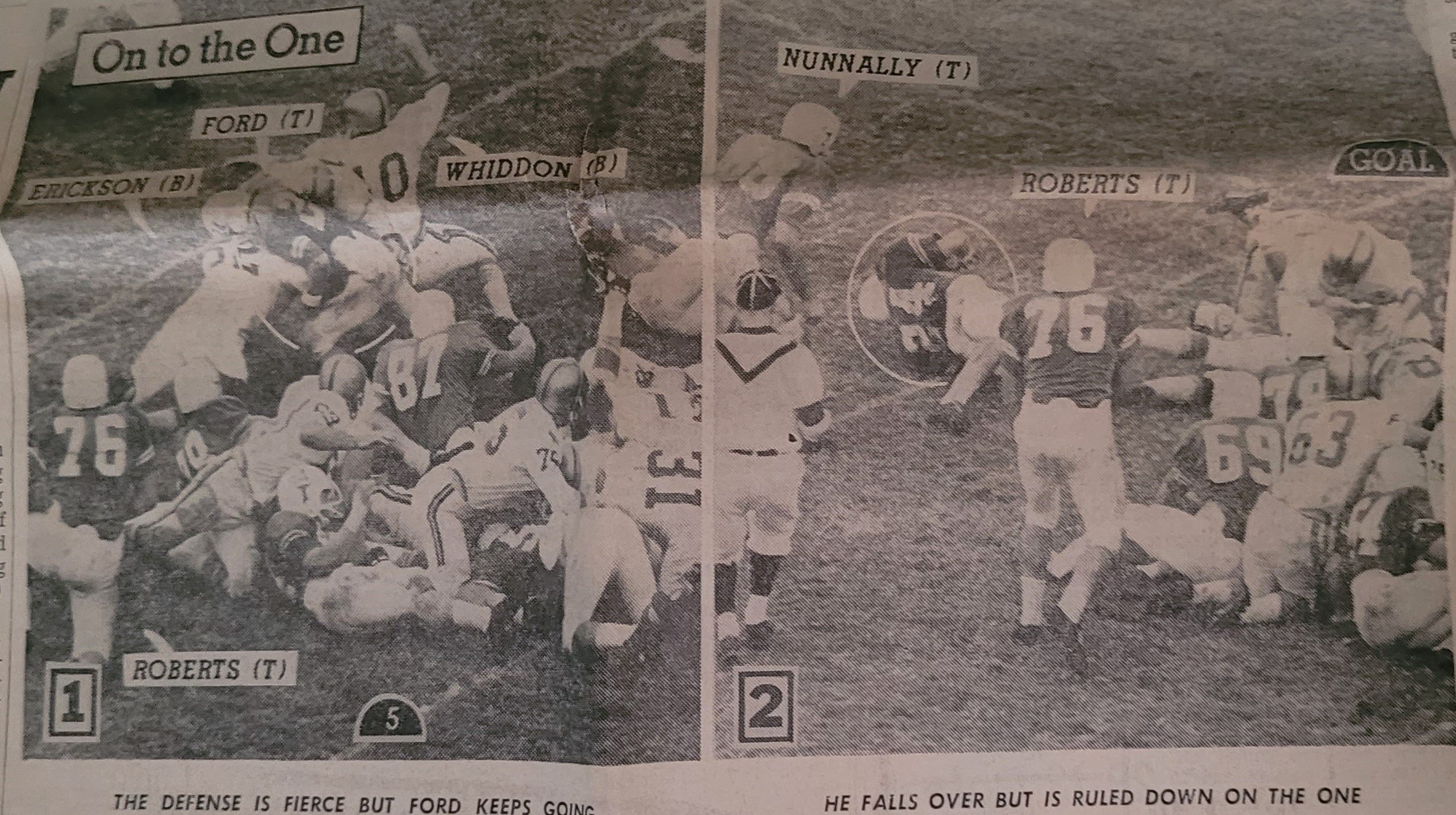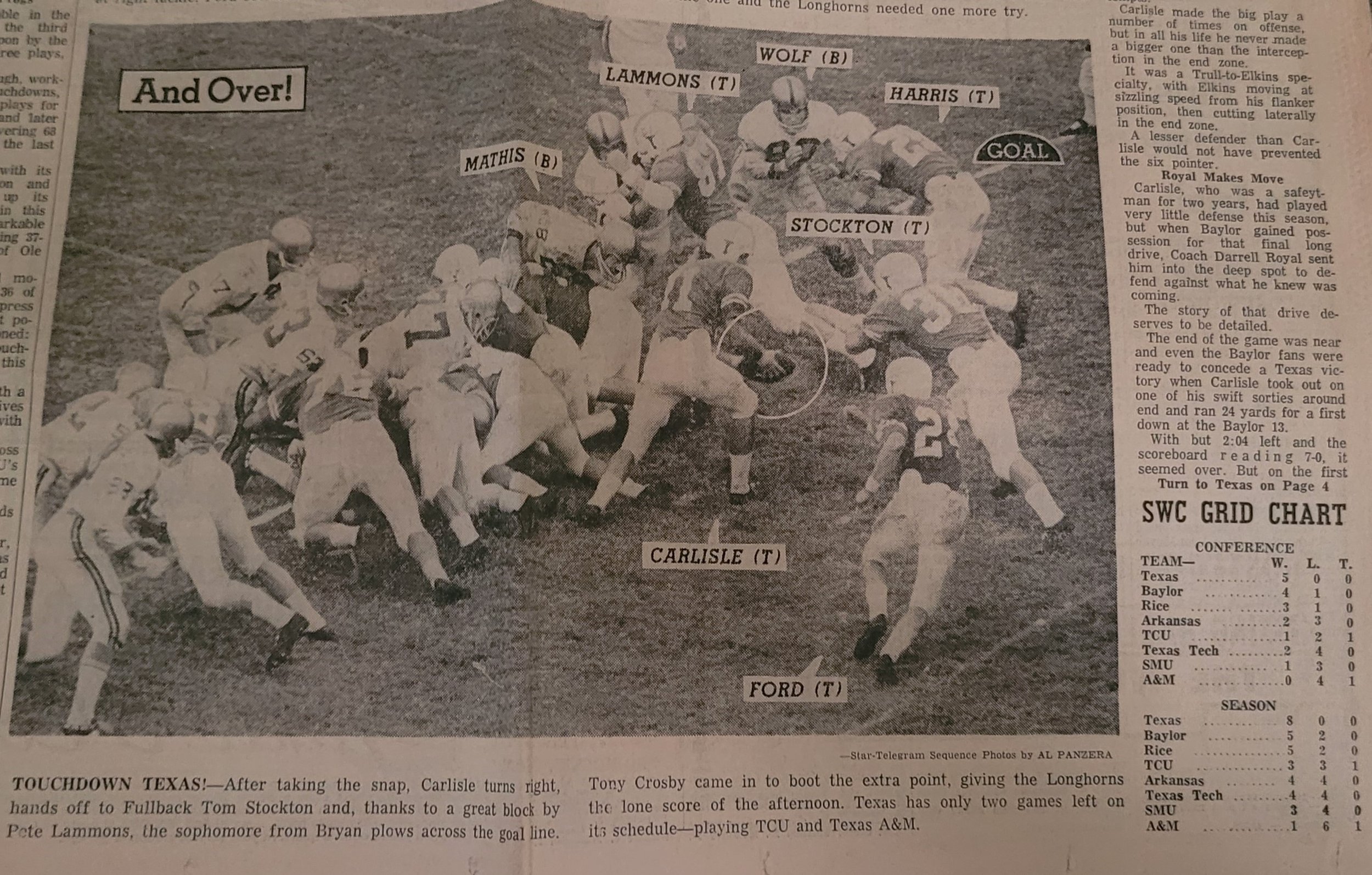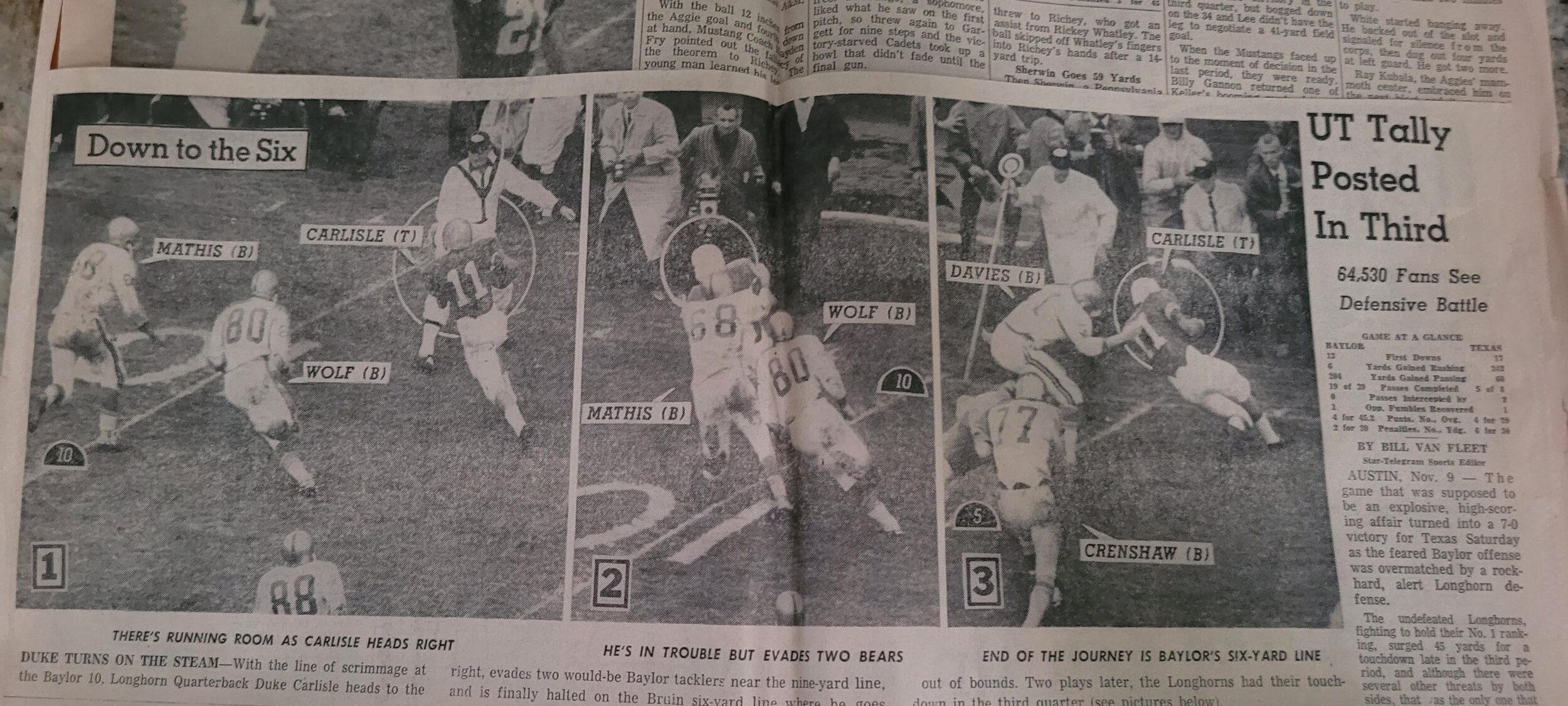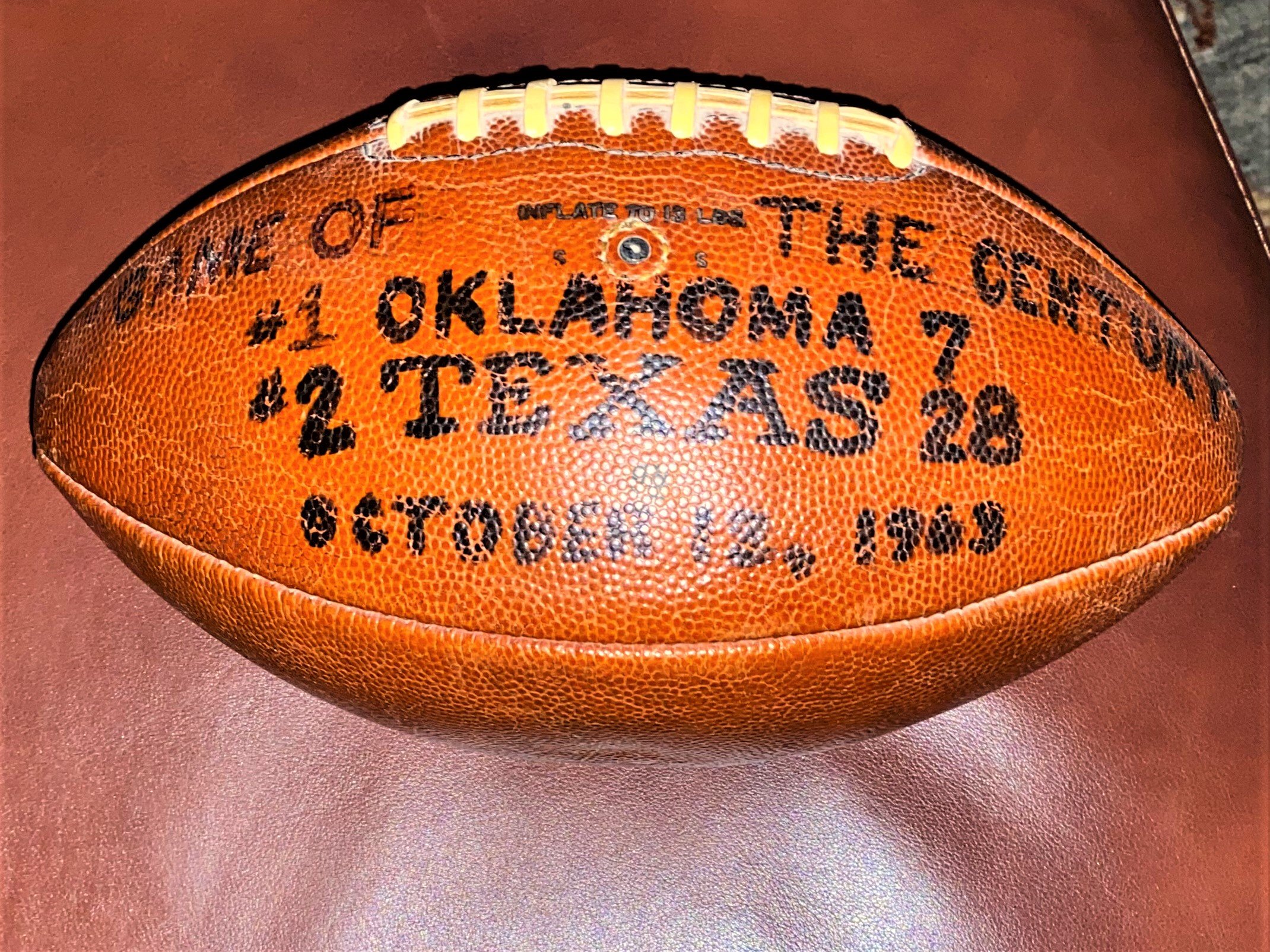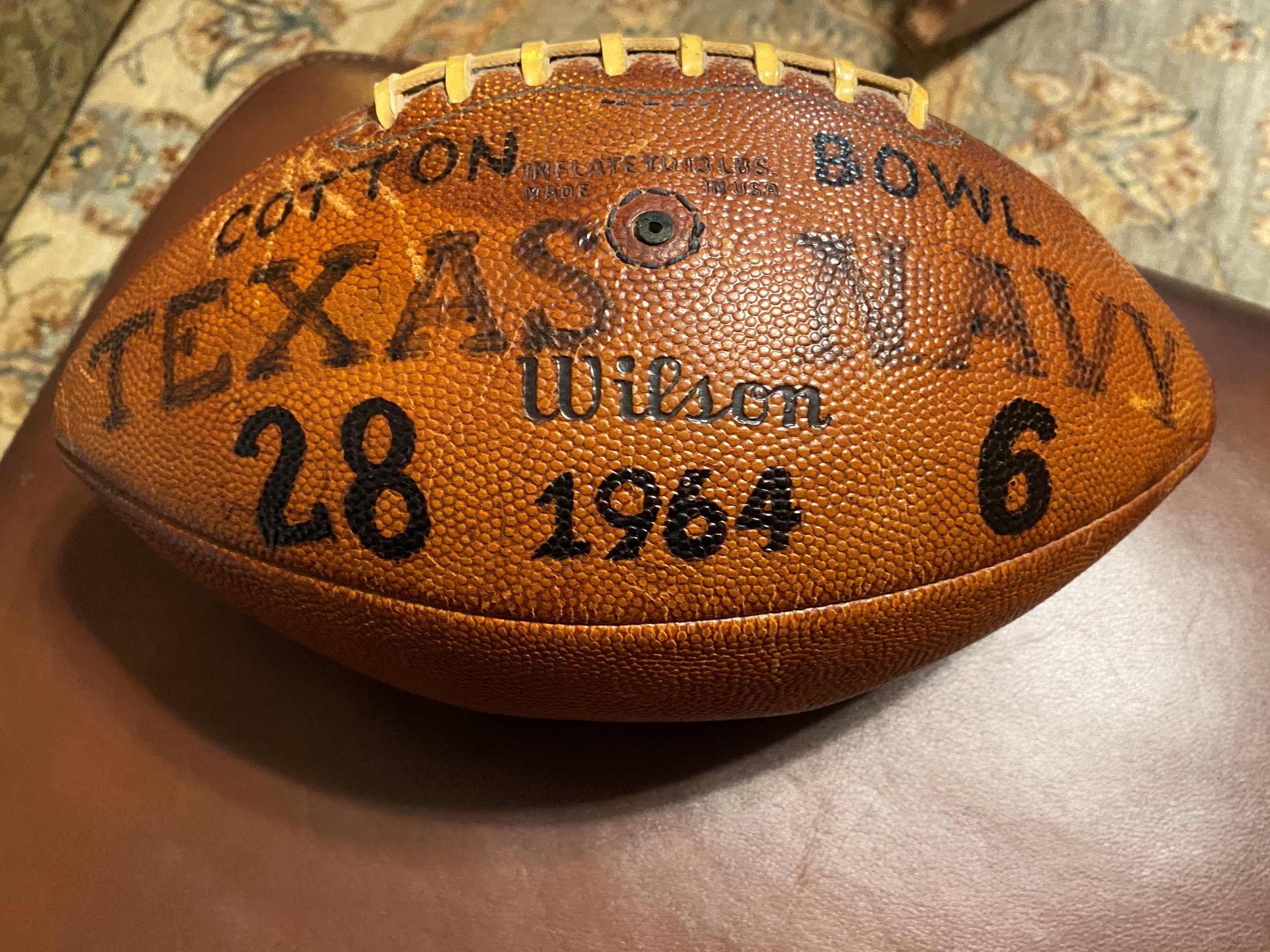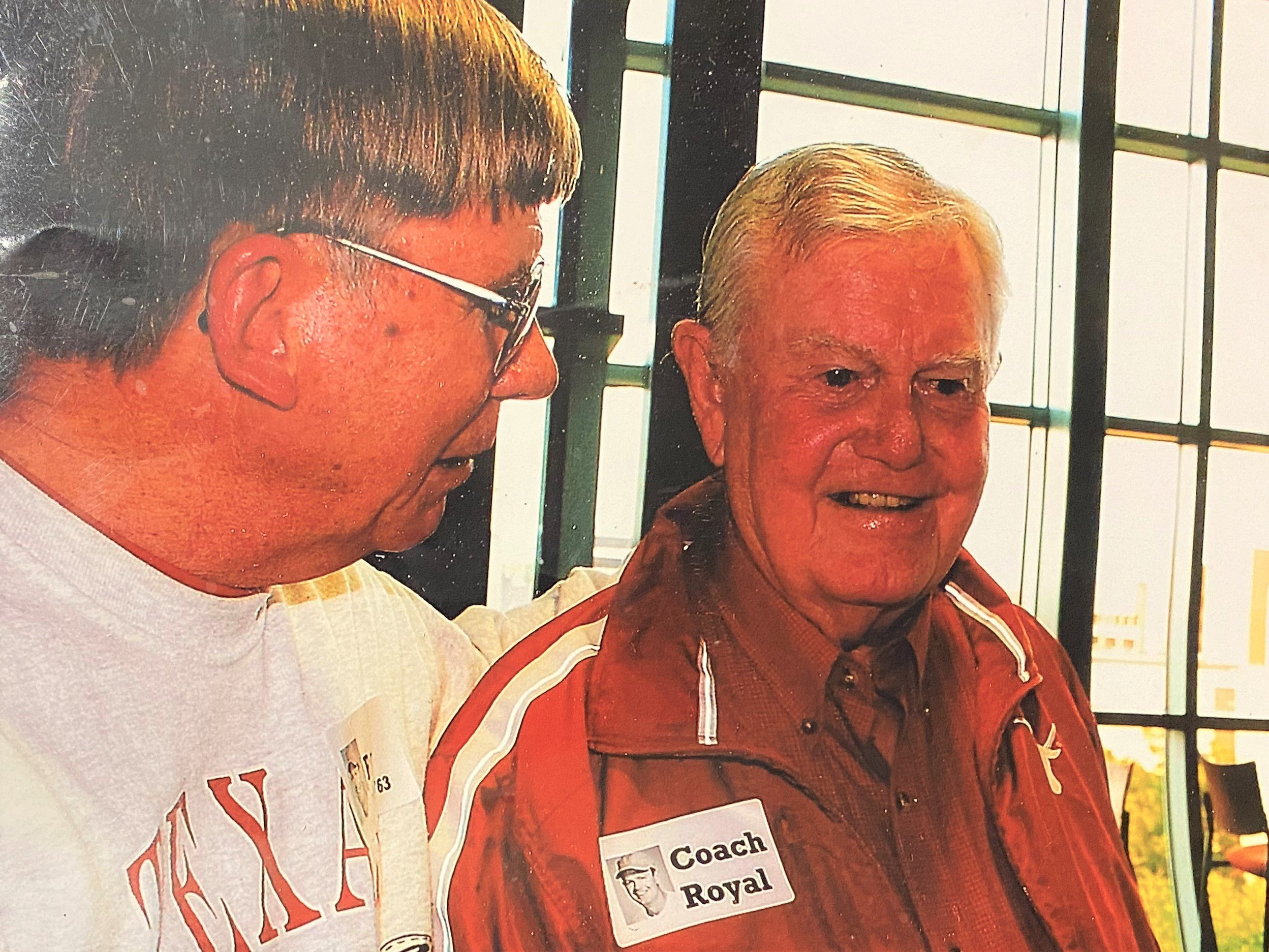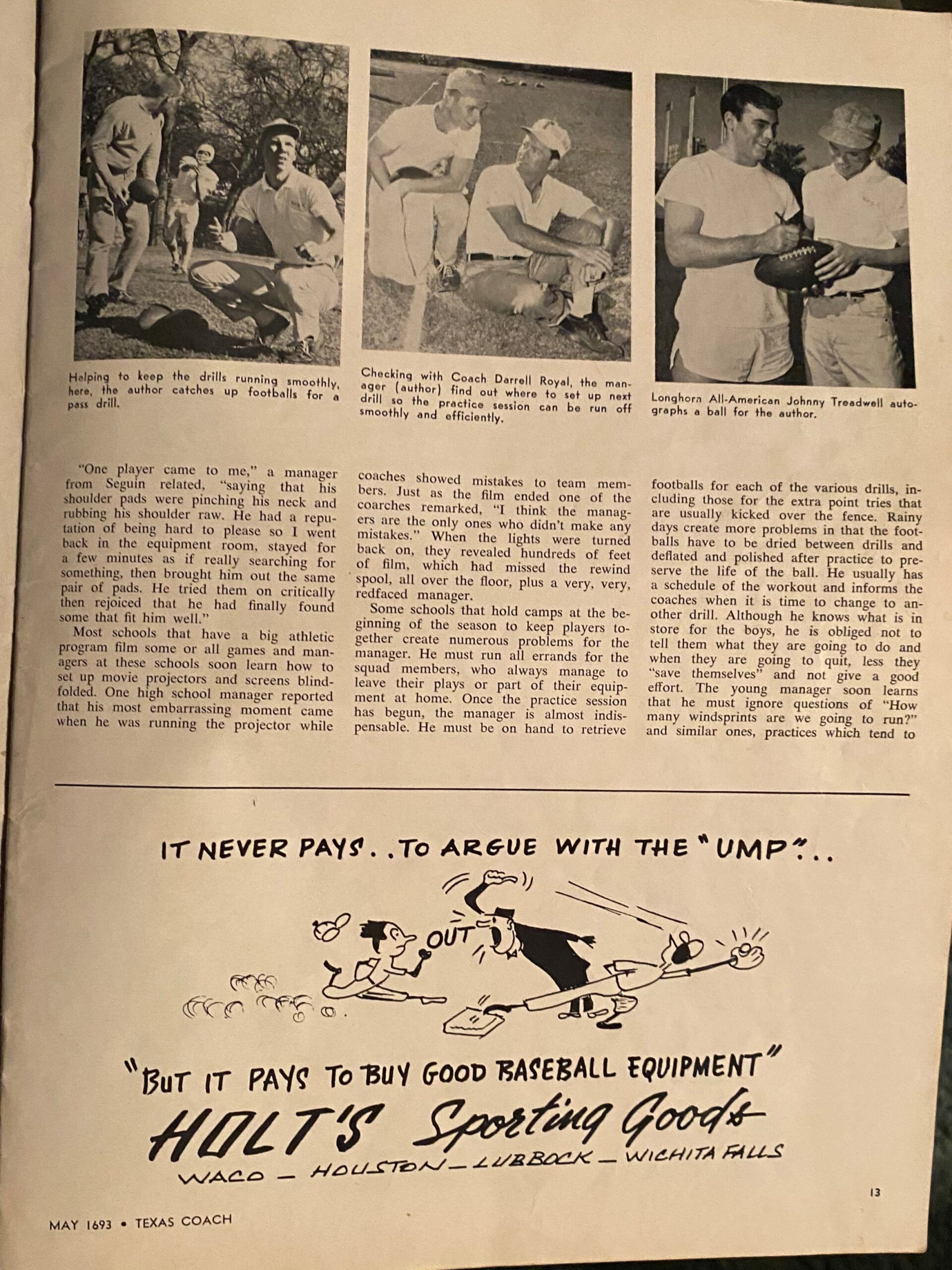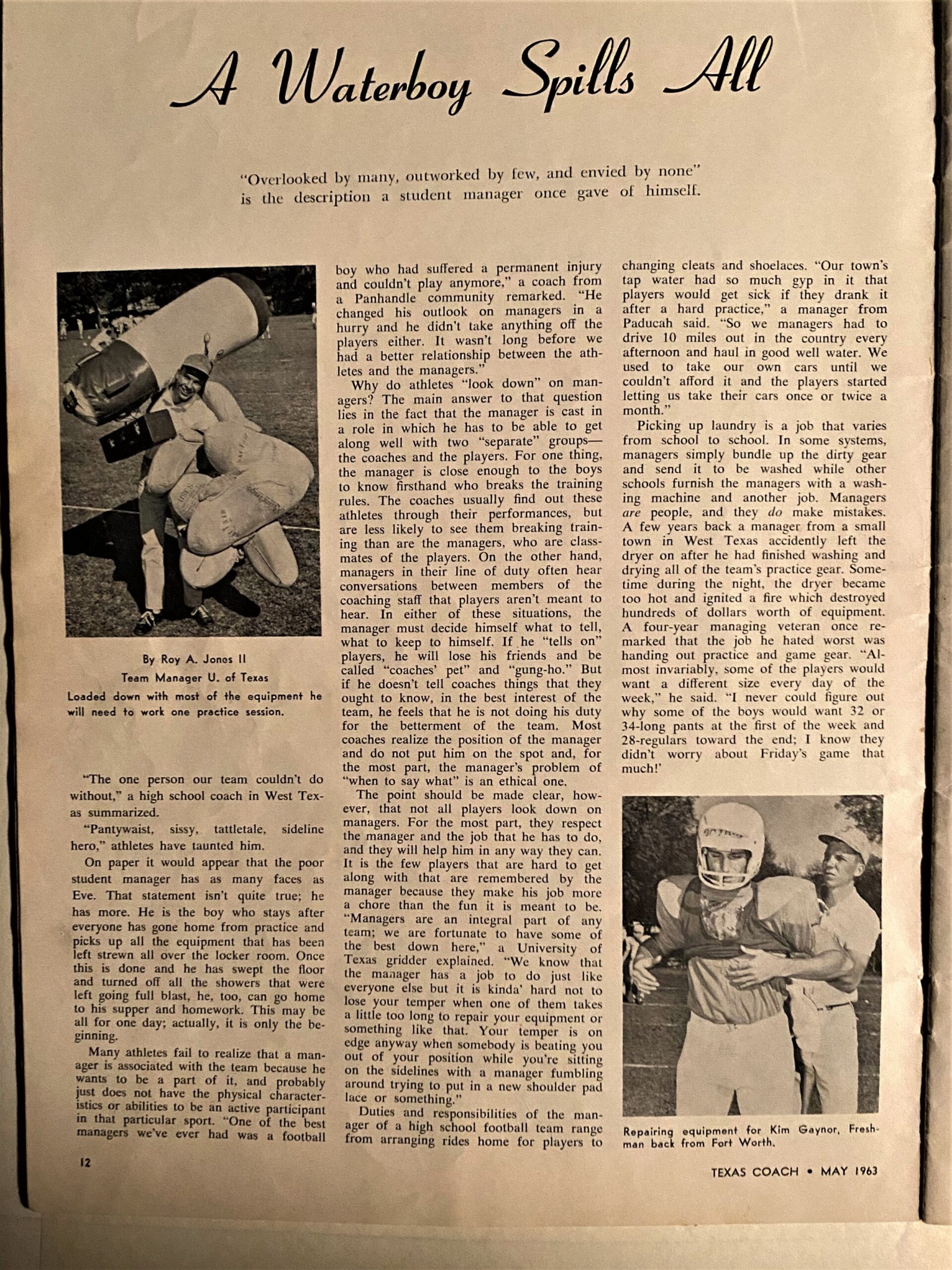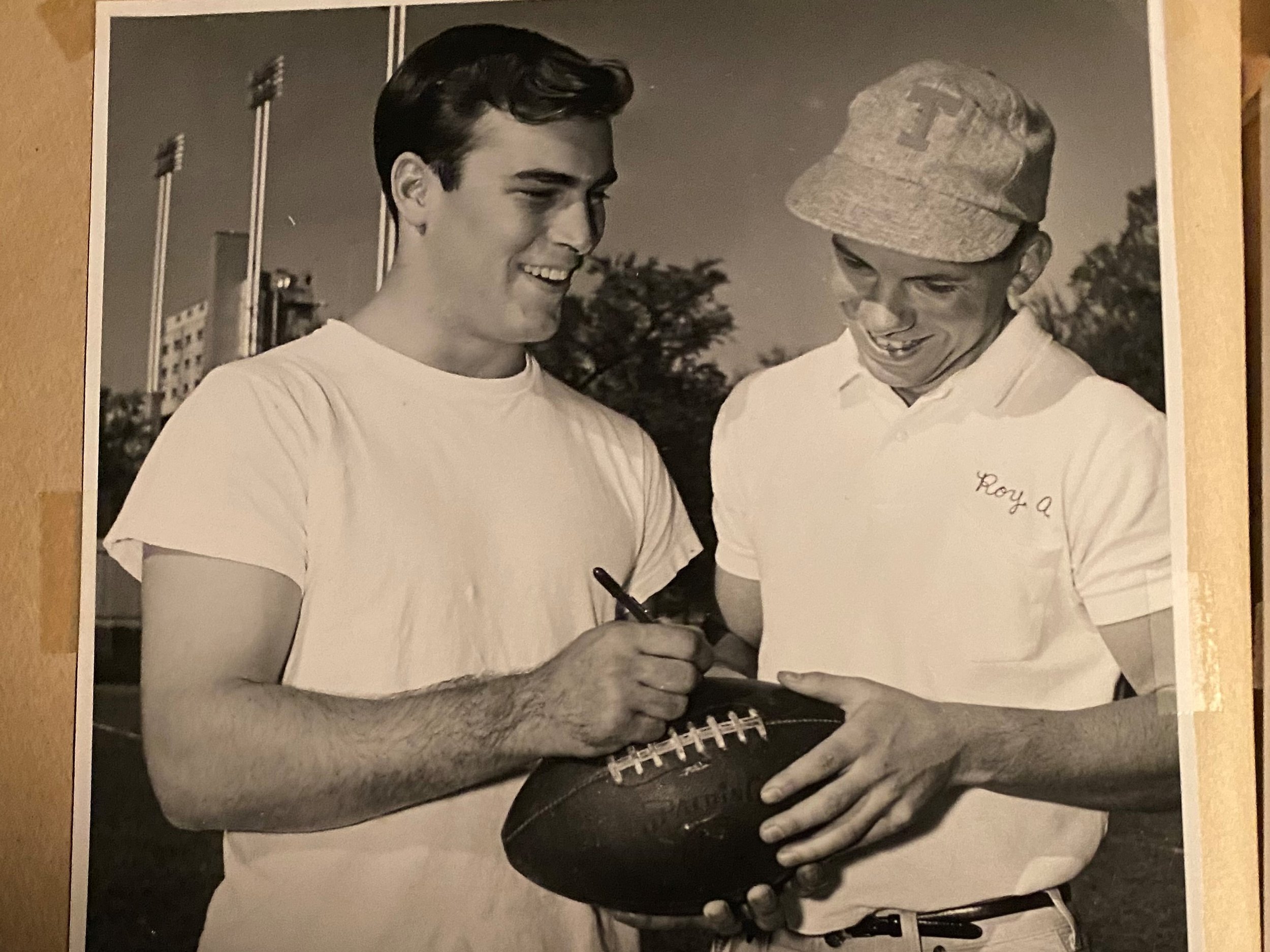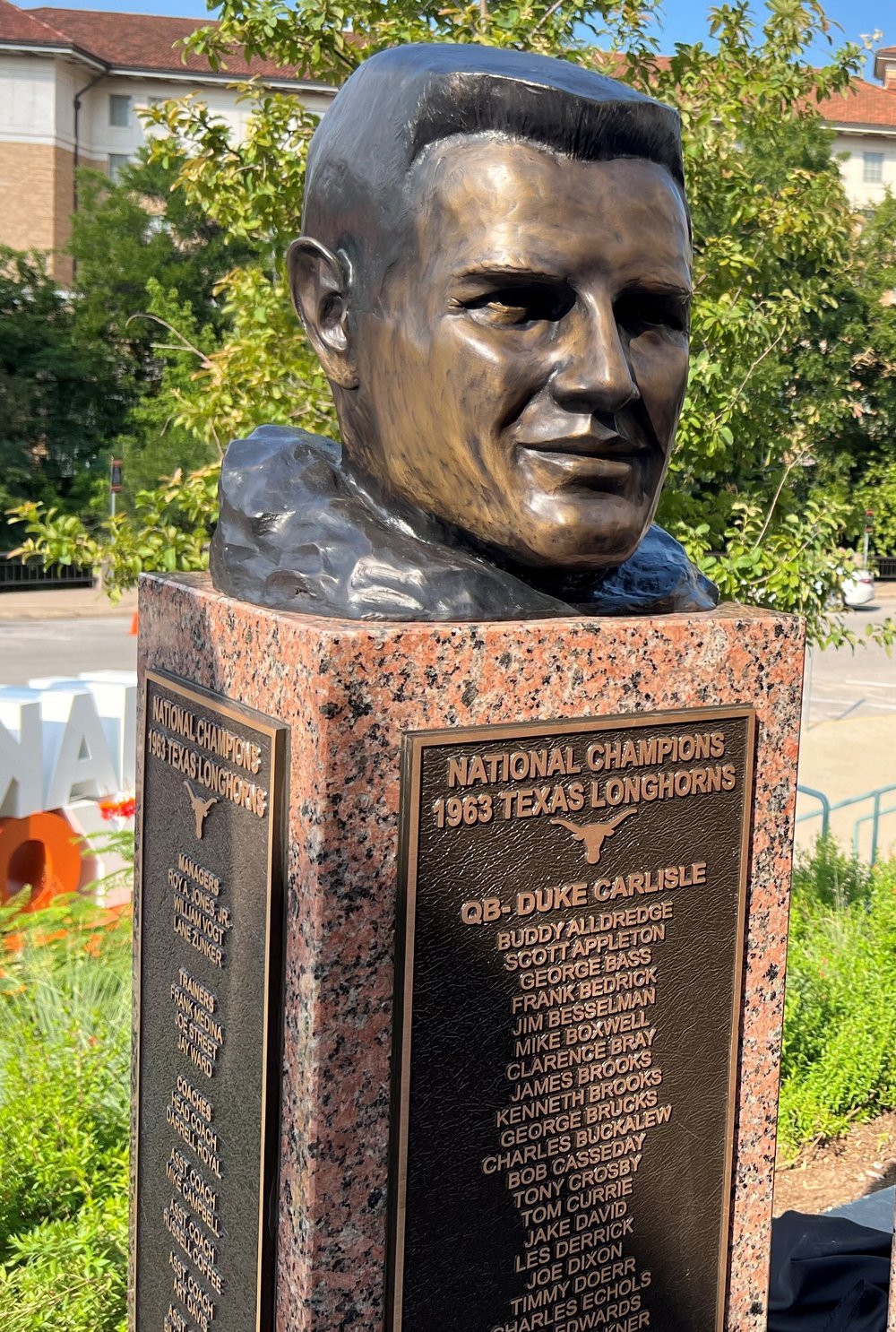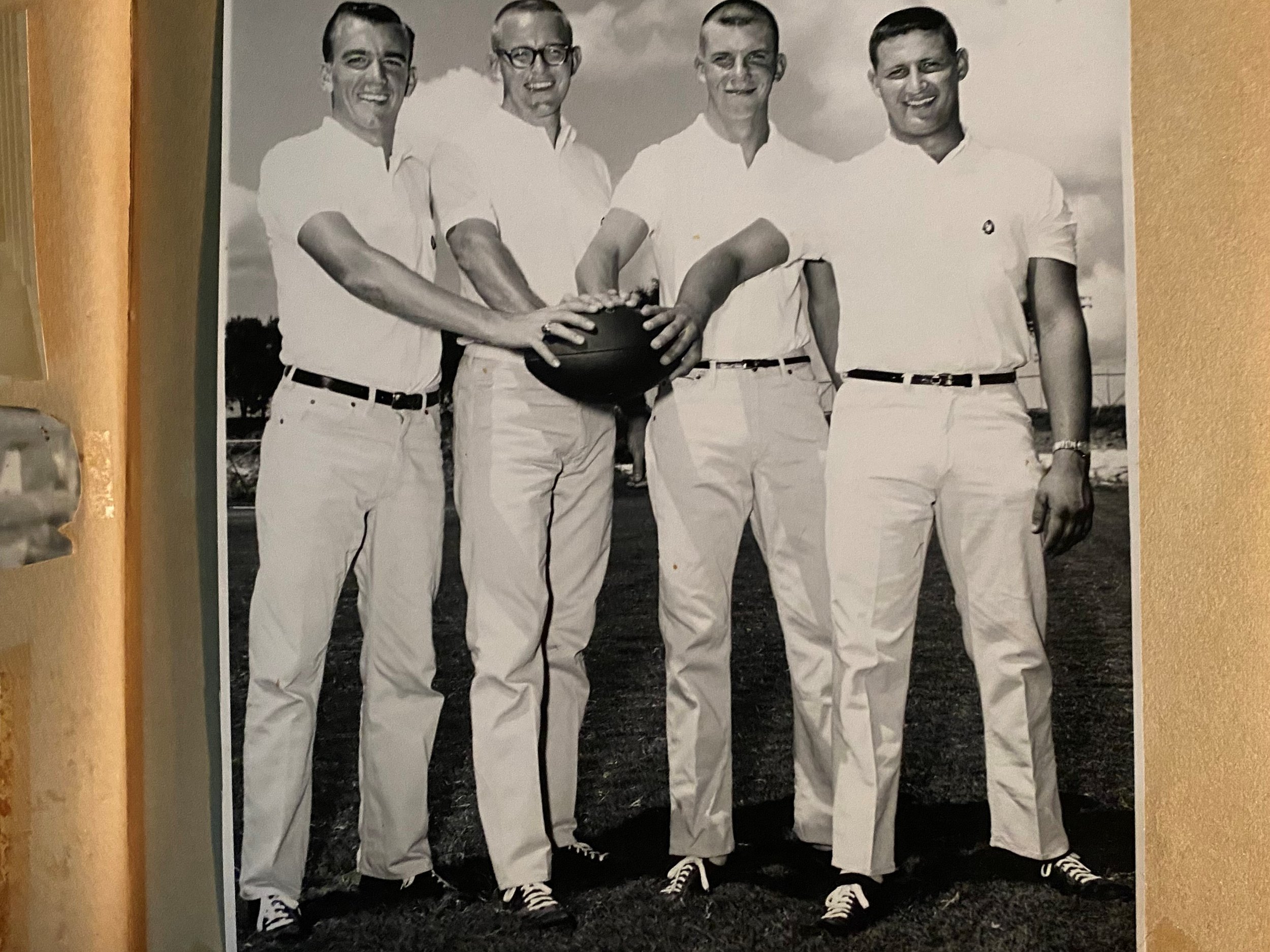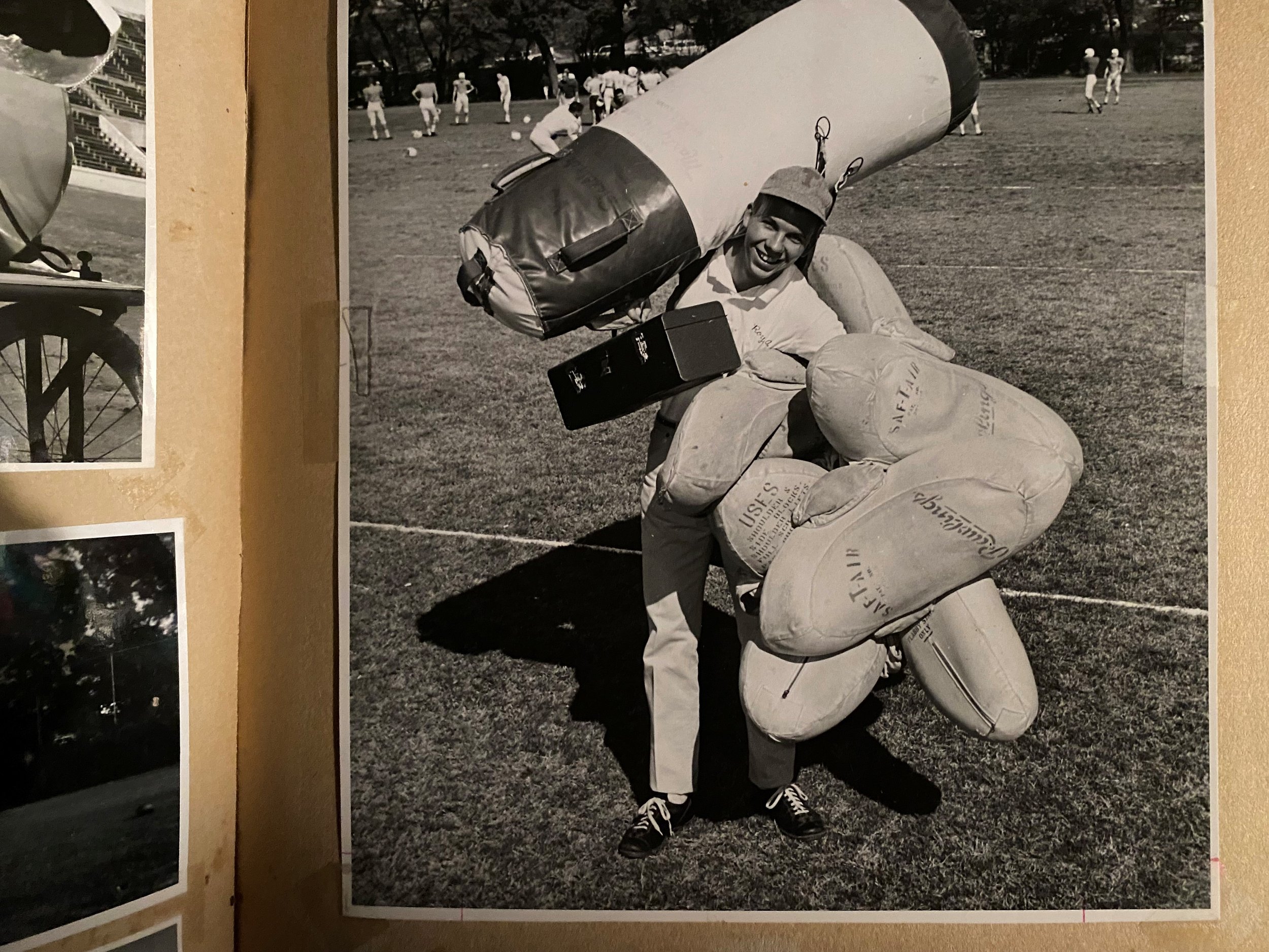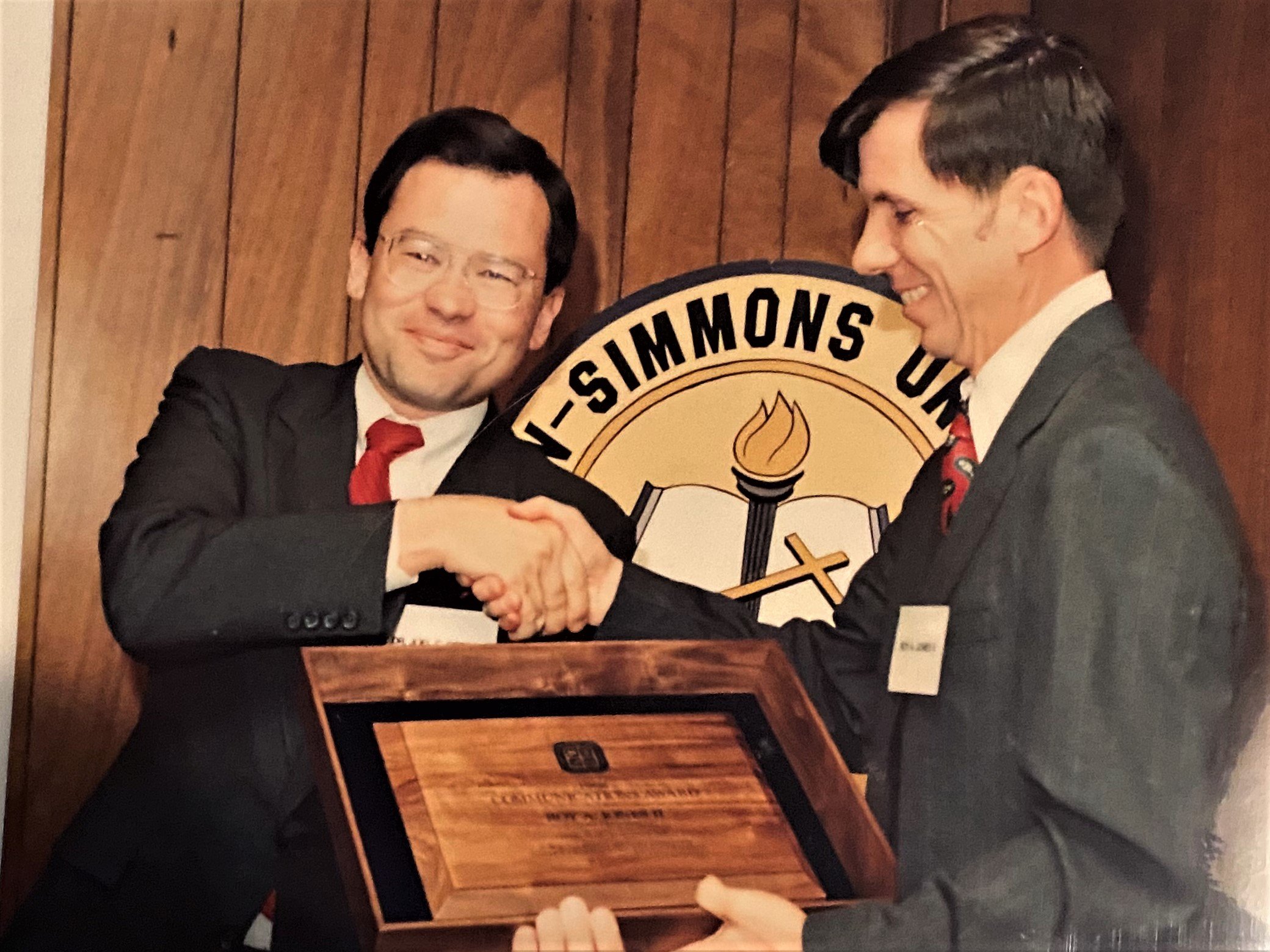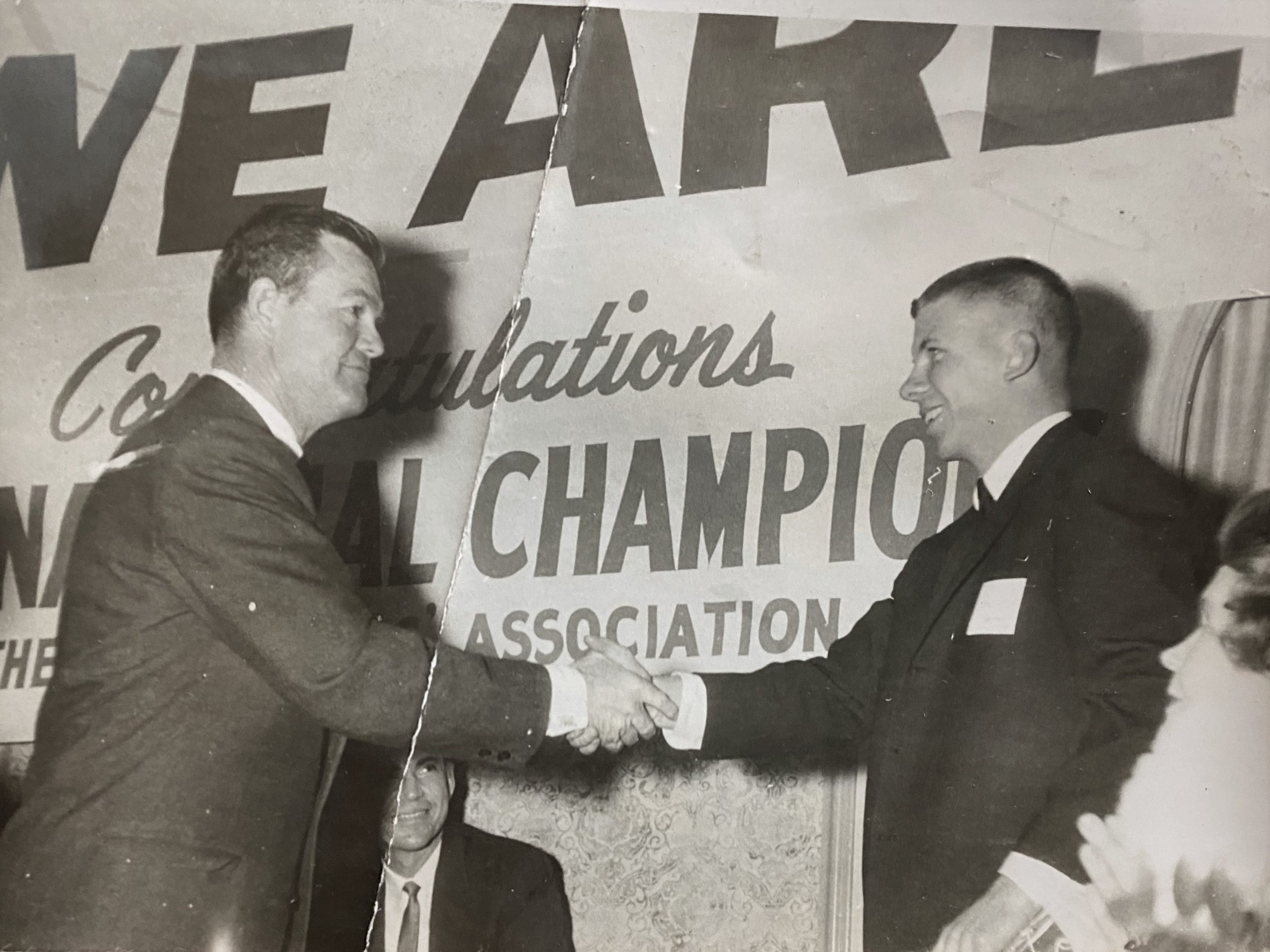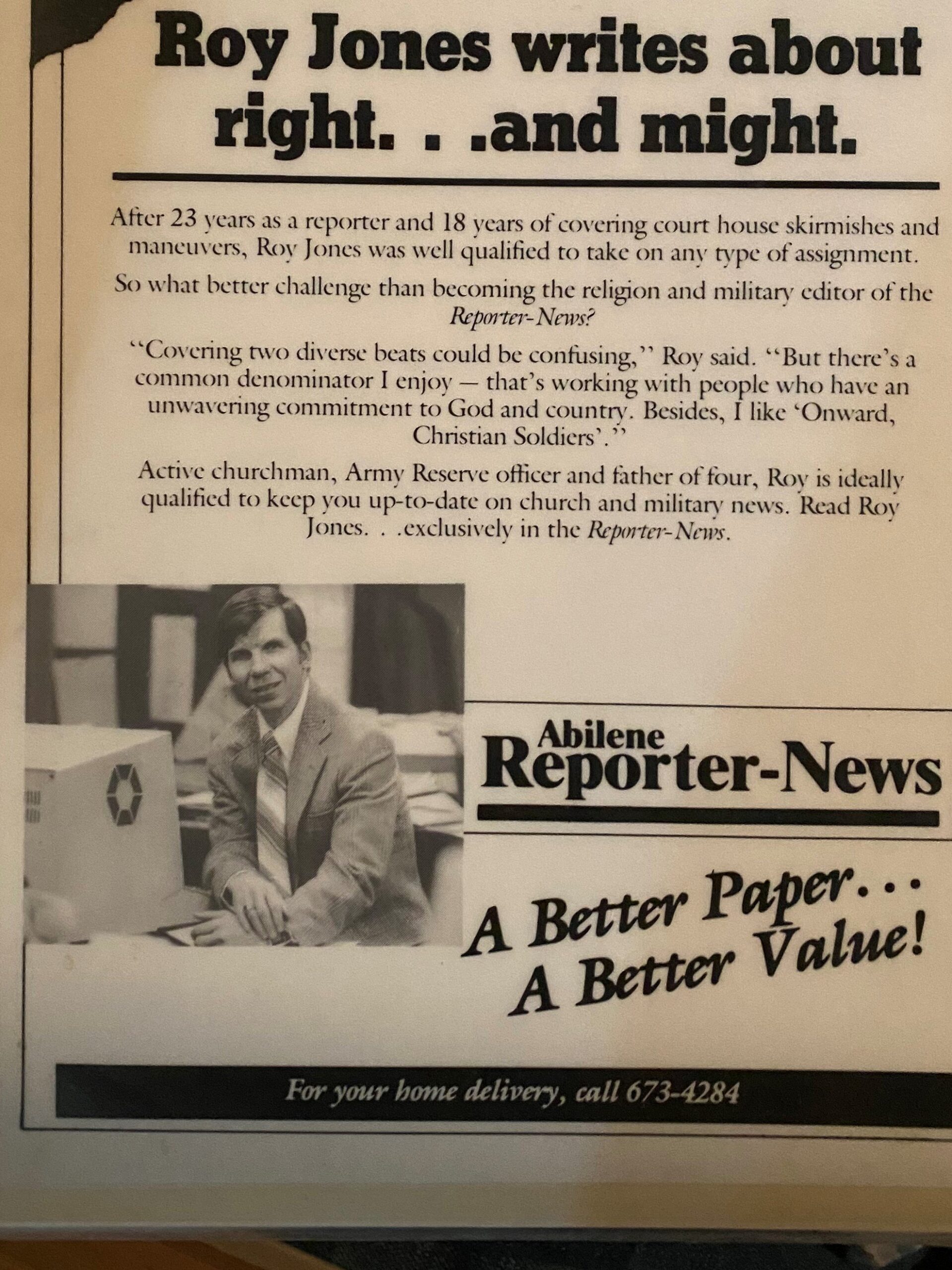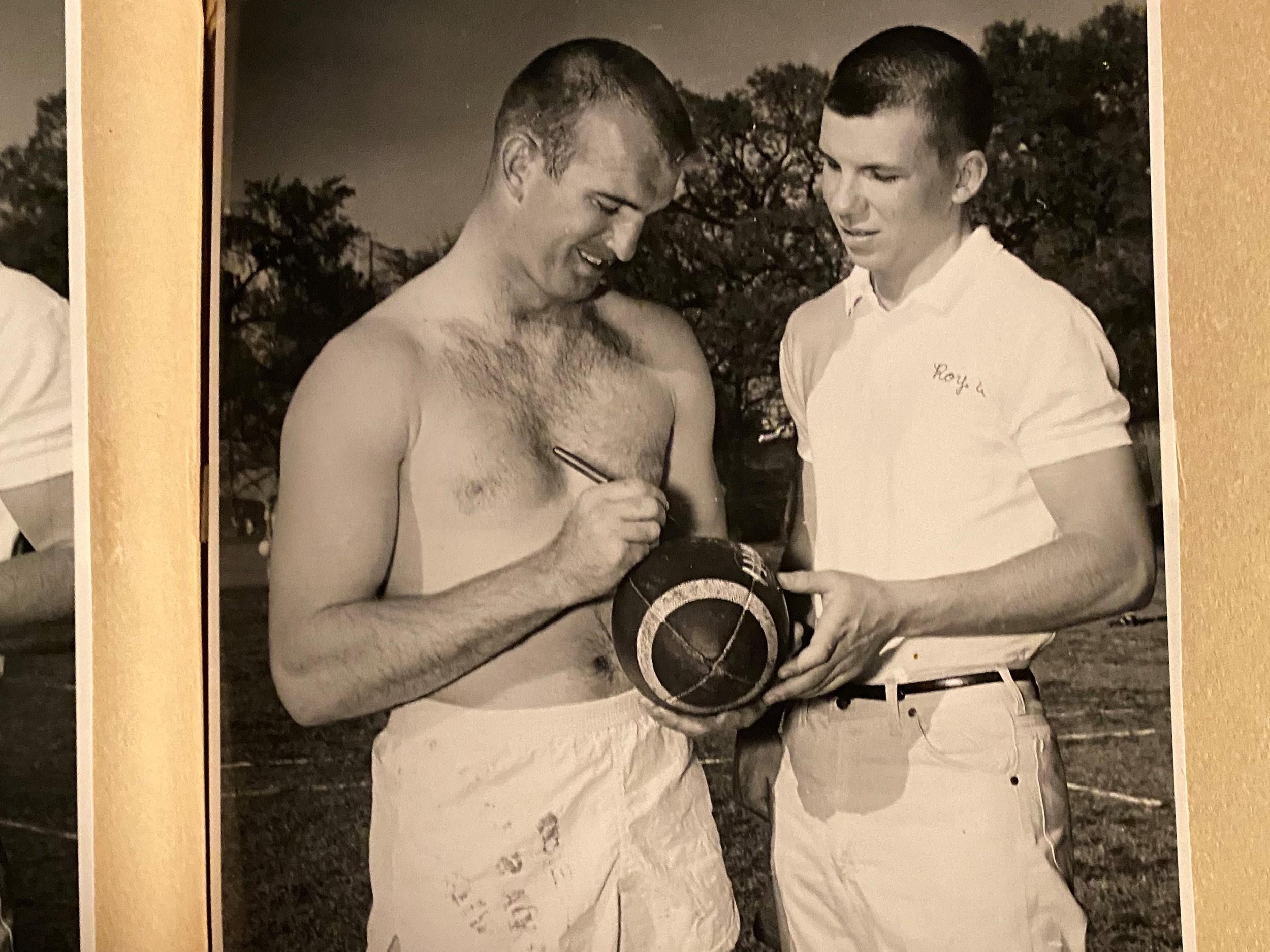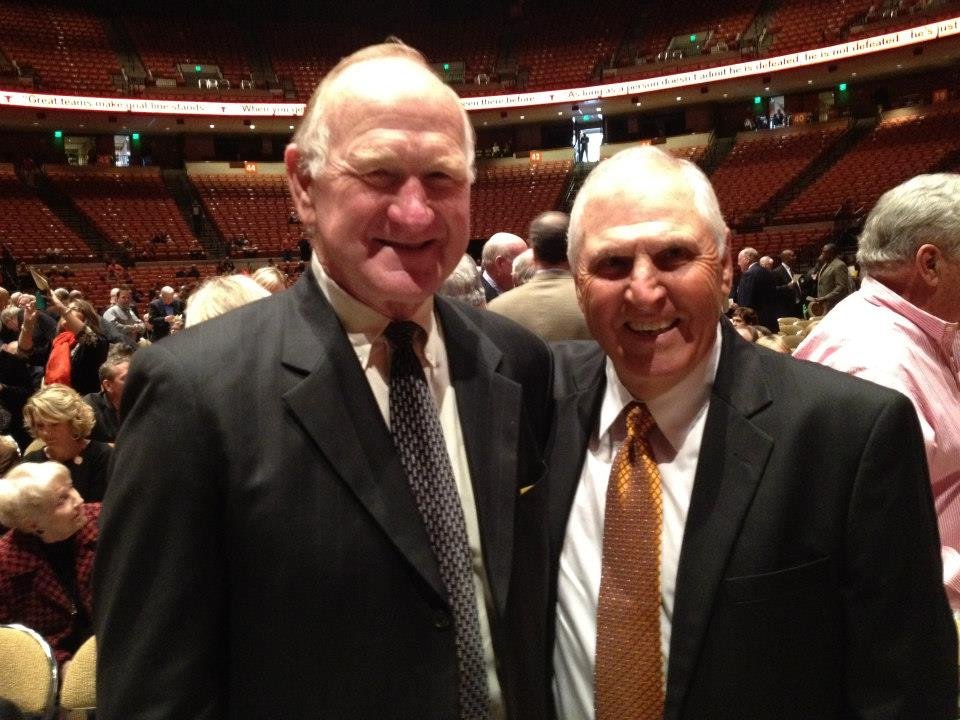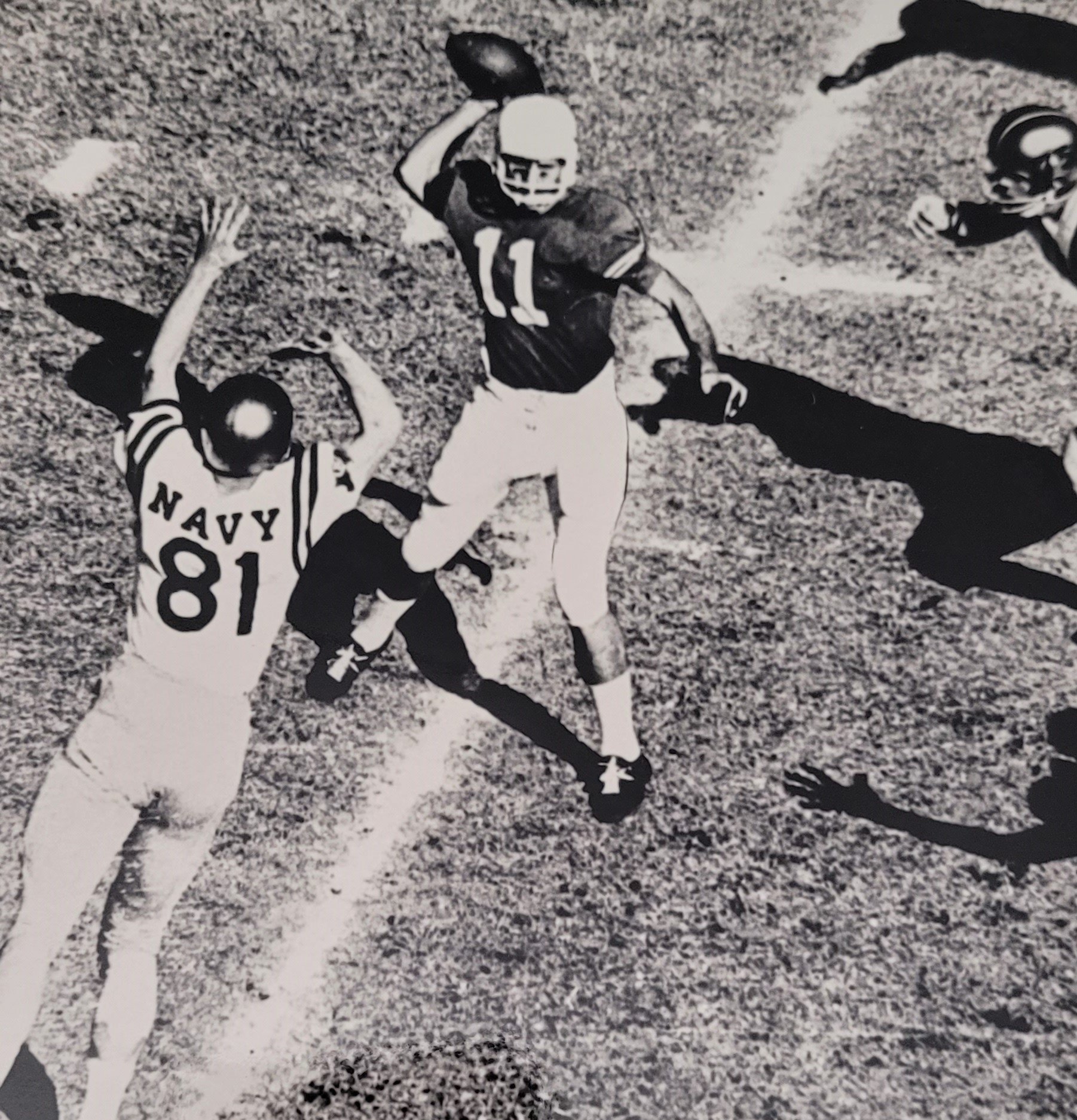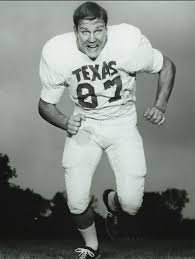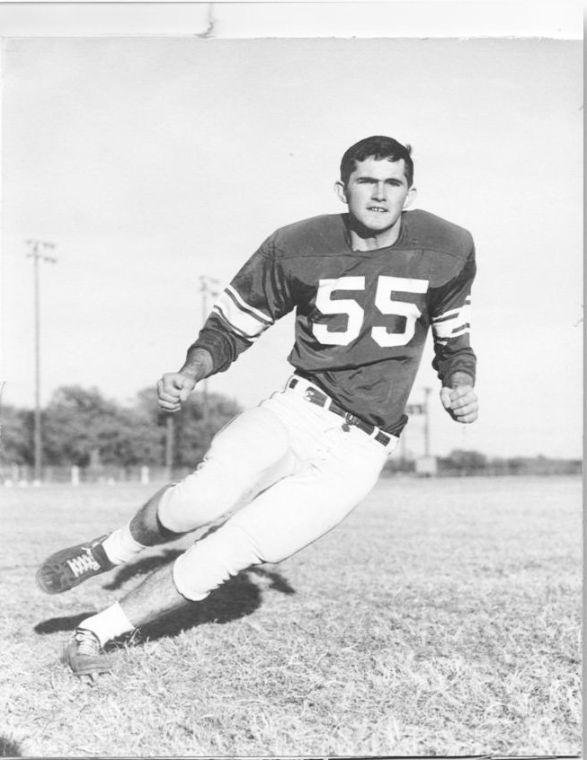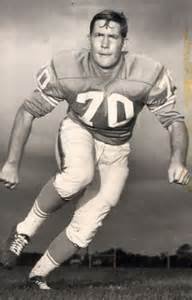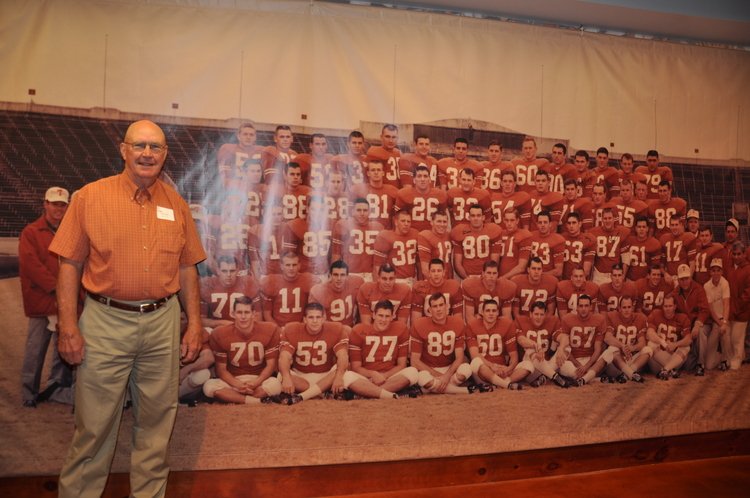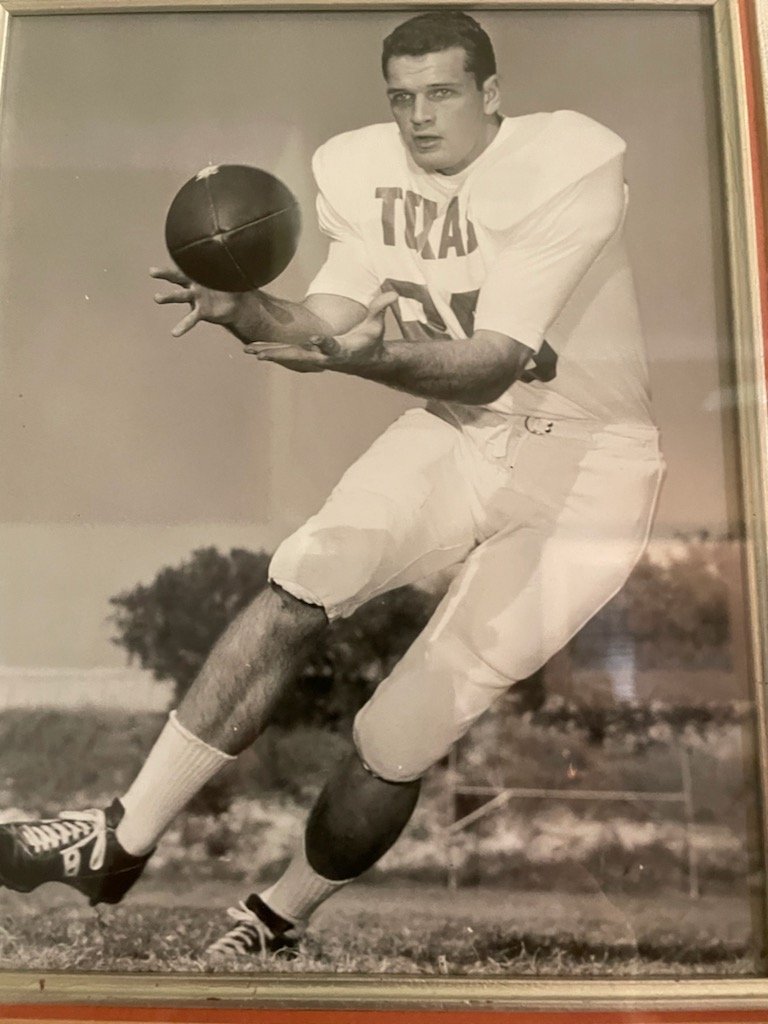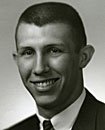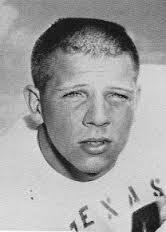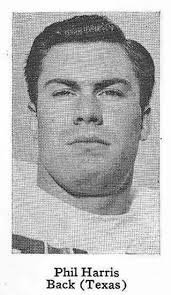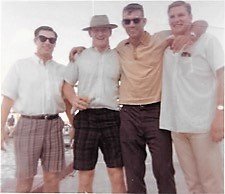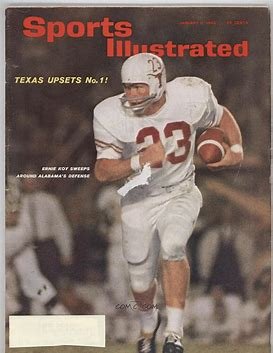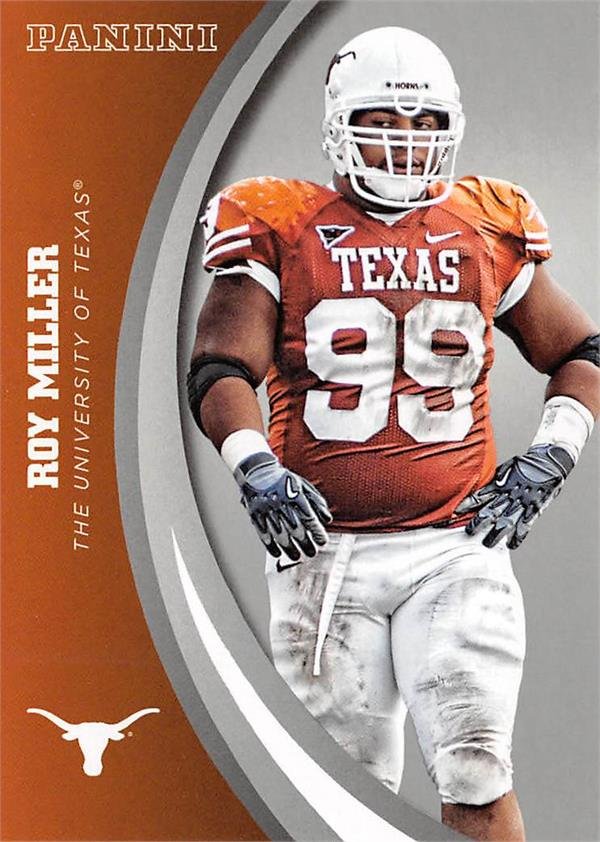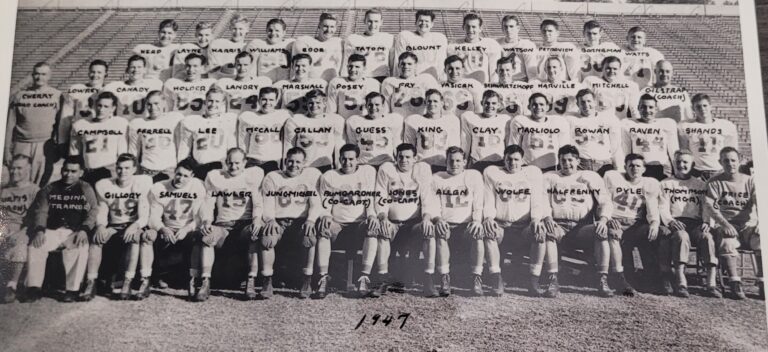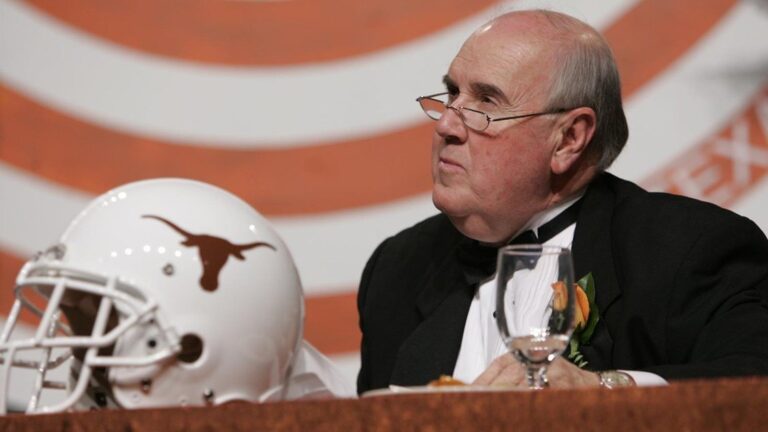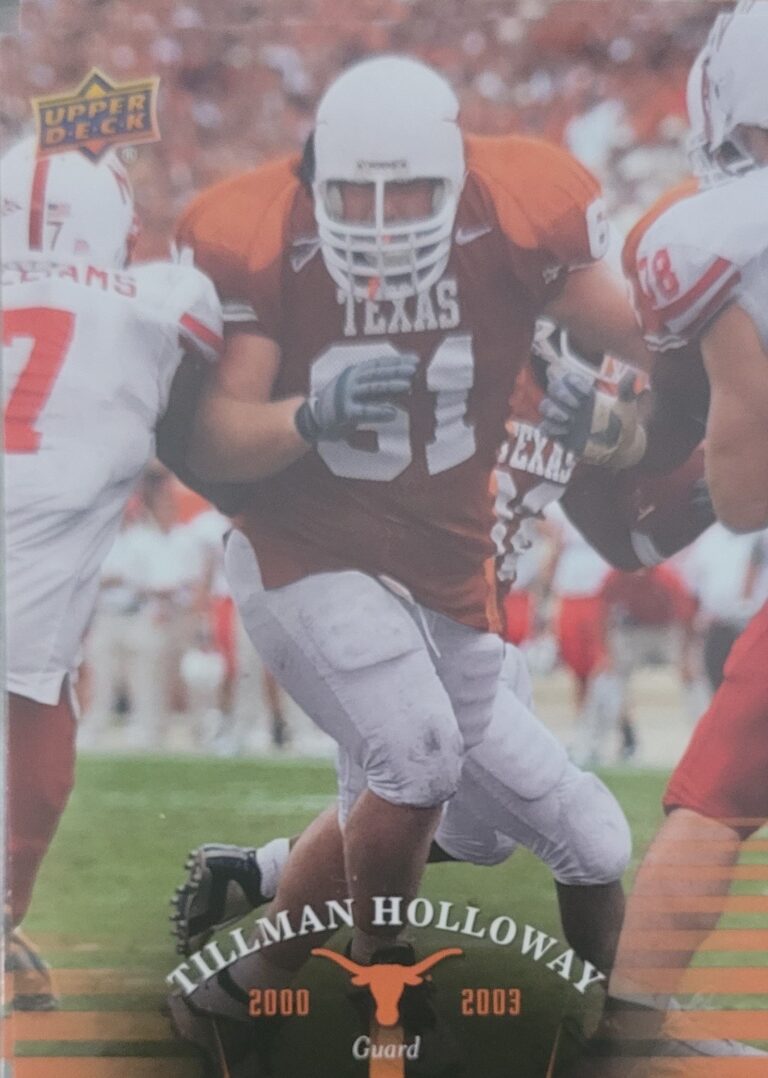Articles and photos of the 1963 year
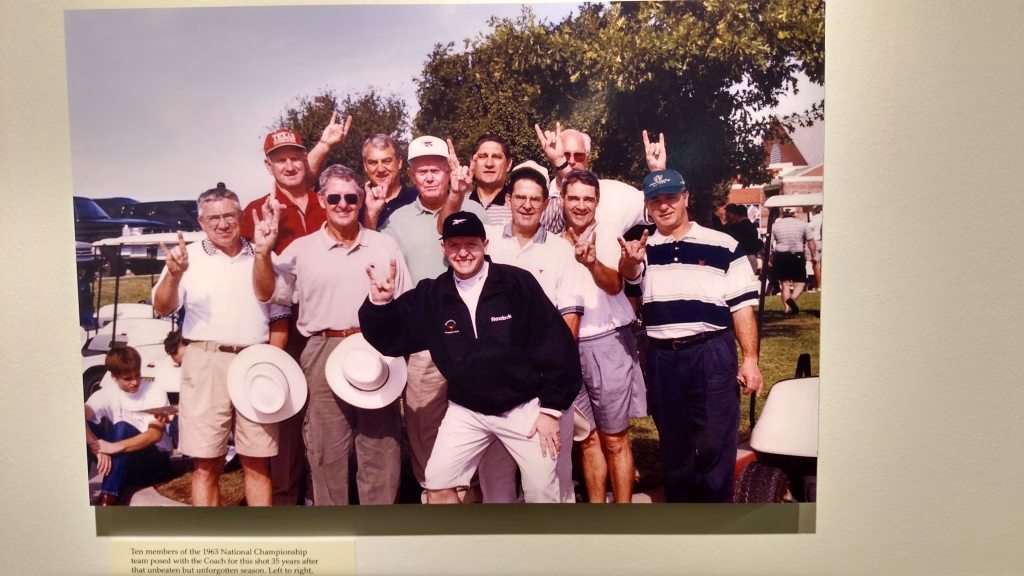
8/29/2023 – Jerry Frey remembers the 1964 Cotton Bowl game.
I was at the 1964 Cotton Bowl game with my dad, who was a huge Longhorn fan. Back then, the media was based in NY and heavily slanted toward the East Coast teams. The Big Ten got most of the media love. I recall my dad telling me that they all favored Navy and Roger. But Royal and the boys showed them who was best in the field. Duke Carlisle and Tommy Ford would not be denied on January 1st. It was epic. Thanks for sharing about JFK. I have studied that sorrowful day a lot and did not know about Austin and DKR ever. That was the day the country lost its innocence. And trust. Based on the evidence and the anomalies, I will never believe that Oswald acted alone. We need heroes today like JFK and DKR.
In 1963, the players wore Burnt orange jerseys, white pants, and a helmet with a Longhorn decal. The new lighter shoes add a tenth of a second more speed for each player—the difference in winning and losing in many games. The game pants are nylon instead of cotton, allowing the pants to stretch and fit the player. Plastic, fiberglass, and sponge rubber are used for all the pads. For safety reasons, the helmet suspension system was changed. More straps help distribute the impact over a larger area.
David McWilliams, the lone surviving tri-captain of the 1963
national championship University of Texas football team — the school’s
first — had a surprise “guest” for his teammates at their 60th reunion
Sept. 1-2 at Austin.
1963 call that won the game for the horns. The pass was intended for George Sauer.
The spirit of their late coach Darrell Royal hung heavily in the air
as 31 octogenarians reminisced about the “glory days” and groused about
their lack of Name, Image and Likeness benefits.
The only money they received was $3 for an evening meal on game
days when the chow hall was closed.
And that spirit was never stronger than when McWilliams introduced a
film clip from Royal’s widow, Edith, who will be 98 years old come Oct.
27.
She said she regretted not being able to attend in person, but
welcomed the players to Austin and congratulated them on their
outstanding varsity years at UT. Counting their undefeated freshman
season, the 1963 seniors compiled a record of 35 wins, two losses and
one tie.
They came within a combined six points of winning national titles in
1961 and 1962 — a 6-0 upset by TCU the only blemish on their sophomore
season and a 14-14 tie with Rice their junior year. Still, they finished
no worse than fourth in the nation all three years on varsity.
“We got so close in ’61 and ’62 that we just made up our minds
nothing was going to stop us in ’63,” said Staley Faulkner, aka
“Bucket,” one of the three 1963 starters who had redshirted their
sophomore year, then made sizeable contributions enroute to the national
title. (The others were Gordon Roberts, who now lives in Dallas, and the
late Ken Ferguson of Waco.)
Faulkner got his nickname because he had to have a custom-made helmet to fit his head. “Size 8, long oval,” he recalled, adding that he broke
three of them butting heads with the likes of 6-foot-6, 265-pound OU
All-American Ralph Neely, who went on to a 13-year Hall of Fame career
with the Dallas Cowboys.
“We hit so hard once it put a big dent in my helmet. I don’t see how
he got up but he did,” Faulkner added. He was one of four players and a
manager who shared memories at the Friday night banquet at the UT Golf
Club. He recalled how Royal prepared the defense to chase Navy’s
scrambling quarterback, Heisman Trophy winner Roger Staubach in their
final game, the 1964 Cotton Bowl.
“He’d pitch a football to one of the reserve backs and tell the
linemen to chase him until we caught him. Those guys would run across
all three practice fields dodging us.”
The ploy worked. The ‘Horns sacked Staubach so many times he wound up
the game with minus-57 yards rushing and one lone TD pass.
Clarence Bray, now a semi-retired attorney in San Antonio and one of
the key planners for the reunion, recalled how his 1960-63 teammates
“formed special relationships and made special memories” during the
years that seem spartan compared to today’s standards.
“We played both ways. We had no transfer portal. We couldn’t receive
any gifts. There wasn’t any lucrative NIL,” he said. “I can’t help but
wonder what effect it would have made on us.”
Clarence could have added the team couldn’t “scalp” tickets” (more
on that later), had no indoor practice facility or modern weight room No
fancy lockers either.
. Going to the practice field meant a slippery walk across San
Jacinto Blvd. on hard rubber or nylon cleats. If you dodged all the
traffic and got across the street safely, then you had to carefully
navigate the steppingstones to cross stinky Waller Creek.
We managers often got poison ivy from slogging through brush on the
creek bank to retrieve footballs kicked there.
Bray prefaced his remarks by quoting golfing great Lee Trevino who
said, “The older I get, the better I used to be.”
Clayton Lacy, who also played at Texas City with the legendary
Longhorn Talbert brothers, choked up several times when he listed the 30
former teammates and coaches who have passed away. Charles Talbert, who lettered 1961-63 between brothers Don and Diron, was present for the
reunion.
The Longhorn roster included at least one of the Talberts from 1959
until 1966. Don (1959-61) and Diron (1964-66) went on to pro careers
with the Washington Redskins. Charles was more reserved, but Don and
Diron were relentless in their hazing of underclassmen — and
occasionally continued their raucous behavior off campus. They prompted
one nightspot to post a sign, not entirely in jest, that said, “No guns,
knives or Talberts.”
But I digress.
All but one of the 1963 coaching staff are deceased, starting
with Royal who died in 2012 at age 88.
Fiery all-Southwest Conference linebacker Pat Culpepper, who
lettered 1960-62, was a graduate assistant coach in 1963 and was present
for the reunion. It was he and his All-American counterpart Johnny
Treadwell who made the iconic stop on Arkansas fullback Danny Brabham
inches from the goal line to keep Texas’ national title hopes alive in
1962.
The linebackers jarred the ball loose and sophomore Joe Dixon
recovered it in the end zone for a touchback enroute to a 7-3 Longhorn
victory.
Lacy’s voice cracked as he read Dixon’s name. He said he had dinner
with him and Coach Royal and attended a Longhorn practice with Dixon
only two days before Dixon suffered a fatal heart attack at his Dallas
home in 2006. He was 63. His widow, Bobbie Kay Dixon, attended the
reunion.
Frank Bedrick III, a sophomore starter on the 1963 team, also choked
up when he remembered Dixon. Bedrick was one of the heroes of the 1965
Orange Bowl, stopping Joe Namath short of the goal line on fourth and
one and preserving the Texas upset of #1 Alabama.
The deceased coaches and the years they coached at Texas:
** Darrell Royal, 1957-1976; died in 2012 at age 88; won three national
championships.
** Jim Pittman, 1957-1965, was head coach at TCU when he had a fatal
heart attack on the sideline of the TCU-Baylor game at Waco in October
1971. He was only 46.
** Charles Shira, 1957-1976; was head coach at Mississippi State when he
had a fatal stroke in 1971. The “Gentle Giant” who had starred at Texas
A&M and West Point, was only 49. He grew up in Hamlin.
** Mike Campbell, 1957-1977. “Iron Mike,” whose twin sons, Mike and Tom,
played on the 1969 national championship team, was a decorated B-24
bomber pilot in World War II. He died of cancer in 1998 at age 76.
** Russell Coffee, 1957-1972, was a Navy veteran of WWII. He died in
2000 at age 86. He was a Hardin-Simmons University graduate.
** Bill Ellington, 1959-1973, was an Army Air Force veteran of WWII and
graduate of McMurry College. He succeeded DKR as athletic director,
1980-1981. He died in 2000 at age 78, He’s remembered for his folksy
quote to the coaching staff after the last practice before each game:
“Men, the hay is in the barn.” They knew that meant the work is done,
it’s time to play.
** Bob Schulze, 1955-65, was the first college coach future Longhorns
had. He was the veteran Yearlings (freshmen) coach with the
contradictory habits of smoking a pipe and jogging around the huge
practice fields after each practice. No, not at the same time!
** Frank Medina, the diminutive (4-foot-10) Cherokee Indian who served
as UT’s trainer from 1945 until he suffered a stroke in 1978. He struck
fear in the hearts of athletes who were not in shape or missed classes.
Fullback Harold Philipp recalled his punishment for missing one class.
“He took me 10 miles from Austin and made me walk back to the stadium.”
The deceased players memorialized were:
** Scott Appleton of Brady, All-American tackle and Outland Trophy
winner as nation’s best lineman in 1963. Lettered 1961-63, Was a
tri-captain with McWilliams and Tommy Ford in 1963.
** George Bass of Deridder, LA, lettered 1961-62.
** Tom Currie of Houston, lettered 1963-64.
** Les Derrick of Houston, lettered 1965-66.
** Joe Dixon of Dallas, lettered 1962-64.
** Fred Edwards of Donna, lettered 1964-66.
** Ken Ferguson of Waco, lettered 1961-63.
** Tommy Ford of San Angelo, lettered 1961-63, All-American back in 1963
and a tri-captain with Appleton and McWilliams.
** Barney Giles of Marshall, lettered 1954-66.
** Ben House of Corpus Christi, lettered 1961-63. He was later stationed
at Dyess AFB.
** Jim Hudson of La Feria, lettered 1962-64, quarterbacked 1964 team to
Orange Bowl upset of #1 Alabama led by Joe Namath. Later played with
Namath as the New York Jets upset the heavily favored Baltimore Colts in
the Super Bowl III in 1969.
A link to Lammons, Sauer, Elliot, and Hudson is below
Jim Hudson and Pete Lammons
https://www.texaslsn.org/longhorns-lammons-sauer-elliot-hudson-and-the-jets
** Pete Lammons of Jacksonville, lettered 1963-65, also starred on the
Jets Super Bowl championship team with former Longhorn teammates Hudson, George Sauer and John Elliott. “He died doing what he loved doing almost as much as he loved playing football,” Lacy said emotionally. Lammons accidentally drowned in a fishing tournament, his 58th, in 2021. He had the distinction of playing for three legendary coaches: Bum Phillips at Jacksonville High School; DKR at Texas, and Weeb Ewbank at the NY Jets. *
* Tommy Nobis of San Antonio lettered 1963-65, played both ways on the 1963 team, made All-American in 1964 and 1965, and went on to an All-Pro career with the Atlanta Falcons. He still holds the team season record for tackles, set during his rookie season in 1966. When DKR was asked when he was going to stop playing players on both offense and defense, he replied,
“When Tommy Nobis graduates.” Pat Culpepper remembered remarking to
Johnny Treadwell, when they saw Nobis walking to practice his freshman
year, “Johnny, there goes a kid who is going to make fans forget that
you and me ever played linebacker at Texas.”
A link to Tommy Nobis’s story is at the link below.
https://www.texaslsn.org/tommy-nobis
** Knox Nunnally of Midland, lettered 1962-64. Honors graduate who later
served as an attorney for the UT System. Lacy called him “Probably the most giving person I’ve ever known.”
** Darrell Oliver of Muleshoe, a broken neck ended his playing days
after he lettered as a sophomore in 1961.
** George Sauer Jr. of Waco, lettered 1963-65. A zany rebel if there
ever was one (I know because we were roommates). He skipped his senior
year at UT to sign with the NY Jets, where his father, George Sauer Sr.,
a College Hall of Fame member was the player personnel director. George
Jr. led the old AFL in receptions and made the Pro Bowl four times. He was
the leading receiver in the 1965 Orange Bowl upset of Alabama and the Jets’ Super Bowl III upset of the Baltimore Colts. He quit pro football at the
peak of his career because he said football was “dehumanizing” and that
he hated it. He died at 69 from complications of traumatic brain
injuries. On his obituary memorial site, Joe Namath wrote: “You were a
gentle soul and the best receiver I ever had.”
** Jay Ward had the best of both worlds: he was a trainer under Frank
Medina 1963-64, then head manager under DKR 1965-66.
Two Longhorns were killed in combat in Vietnam.
** Terry Hale from Abilene was a trainer from 1963 to 1967. He was commissioned a second lieutenant through Naval ROTC. He was killed while leading his first patrol 17 days after arriving in Vietnam in 1968. Frank Medina and the entire coaching staff came to his funeral in Abilene. He was only 23.
++ Ed Pennington from Phillips played his freshman and sophomore years
at UT but did not letter. He was a captain in the Army when he was
killed in action in 1969. He was 26.
Lacy also mentioned the recent death of Bill Little, who spent the
best part of six decades covering Longhorn athletics. He was sports
editor of The Daily Texan when he covered the 1963 championship season,
and later served 46 years as assistant sports information director and
then SID. He was 81.
Lacy singled out McWilliams for his more than 50 years of service to
UT, from a two-way player 1961-63 to assistant coach 1970-85, head
coach 1987-1991, to associate athletic director, and finally head of the
T-Association, a job he still holds. His teammates gave him a standing
ovation.
In brief remarks, McWilliams echoed Faulkner’s resolve to “win it
all” in 1963. “During the summer before our senior year, Pat (Culpepper)
had us other Cleburne boys (Timmy Doerr, Howard Goad and McWilliams)
bring our shoulder pads and helmets home and we practiced nearly every
day, especially covering kickoffs. People who saw us out there running
around in the heat thought we were crazy.”
Culpepper said the old plastic shoulder pads held in heat and
probably contributed to the tragic death of sophomore Reggie Grob in
1962. Grob suffered a heat stroke on the practice field and died 18 days
later in an Austin hospital. “That, not the games we lost, was the low
point of my time at Texas,” he said.
Every time I meet a former player, I’m kidded about being arrested
for “scalping” player tickets before the OU game in 1962, so I told “the
rest of the story” at the banquet.
About six hours before the game, I was given 30 player tickets to
sell. Selling them for more than face value was illegal, but I had
learned in 1960 that it was expected of managers and that coaches were
to know nothing about it. I had dodged the bullet until that day. I sold
four $7 tickets for $30, a measly profit of $2 for some players.
Unfortunately, my buyer was an undercover Dallas vice cop, and I was
arrested and booked into the county jail with all the drunks from the
downtown celebration the night before.
A wealthy supporter of the team sent Eddie Lebaron, the first Dallas
Cowboys quarterback, to bail me out and take me to the game. I got there
in the second half. The attorney eventually plea-bargained my felony
down to the misdemeanor of disturbing the peace, and I paid a $176 fine and court costs.
No coach ever said a word to me, but I figured I’d blown my dream of
being a senior manager (a full scholarship) in 1963.
Now, the rest of the story: For three years, at 6 a.m. every Sunday, I
went to the local TV station, picked up the film of the previous day’s
game, and put it on a projector in the coaches’ office. A few days
before he resigned, Coach T Jones called me into his office and handed
me an envelope. He said it was “gas money” for all those times I picked
up the film.
I couldn’t wait to return to my dorm and open the envelope. It was
$176 in cash, the same amount as my fine and court costs.” The coaches
maintained deniability but took care of me for “taking one for the
team.”
A slide show of the 2023 reunion is below.
in 1963 and 1964, but he may have made his best play 50-something years
later.
Lee turned a neighbor in his retirement community at Georgetown into
a rabid Longhorn fan — and members of the 1963 national championship
team became “winners” again as a result.
Several years ago, Lee and his wife, Karin, were participating in
one of Sun City’s regular garage or crafts sales when they met Dr. Bill
Clark, a semi-retired physician who was selling handsome items he’d made
in his woodworking hobby.
Lee wound up inviting his new friend to go to a Longhorn game with
him and the doctor was hooked. Although he had attended two UT
institutions, the dental school in Houston and the medical school in
Galveston. he had been too busy with his medical practice to attend
football games.
As the friendship grew, Dr. Clark started buying season tickets and
attending all the home games with the Hensleys, Through them he met
several more of Lee’s former teammates from the glory years.
“The more I learned about that national championship season, the
more intrigued I became with the team,” Dr. Clark said recently.
When he learned the 1963 team was going to have its 60th reunion on
Sept. 1-2, he wanted to do something special for the members.
And boy, did he ever.!
Pat Culpepper shows off the plaque Dr. Bill Clark made for him.
plaques for all 35 of the team members who were expected to attend.
Each 10 by 12-inch plaque, made of maple, oak or walnut, or a
combination of those rich woods, featured a longhorn logo on a football
and “60th Anniversary, The University of Texas 1963 Football National
Champions” plus the player’s name, jersey number and position. Mine
says “Senior Manager.”
We were told that Bill Clark (he wasn’t introduced as a doctor) had
made the beautiful gifts, but I think we all assumed he had been paid
for making them.
Wrong!
It wasn’t until after the reunion that I learned that our guest was
a physician and that the plaques were a gift from him.
As soon as I found this out, I started trying to contact him to
properly thank him. I left phone messages but he was too modest to
return them. I finally reached him three weeks after the reunion. What
an interesting man! I learned that he was actually born in Abilene,
where I live, but grew up in Dallas. He graduated from what is now
UT-Arlington and was attending UT dental school until he learned that
what was thought to be early rheumatoid arthritis in his right wrist
would keep him from being a dentist. Subsequent advances in imaging
(MRI) reveated the problem was actually a cyst pressing against a nerve.
That was easily corrected and he wound graduating from UT medical school
in 1970 and later serving as a pediatric ear, nose and throat surgeon
for nearly 50 years. At 82, he still sees patients three days a week but
doesn’t do surgery anymore.
He joined the Army Reserve while in dental school and rose to the
rank of lieutenant colonel, serving on active duty as a medical officer
at Walter Reed Medical Center near Washington,D.C., and Brooke Army
Medical Center in San Antonio. After retiring from the USAR he received
a promotion to colonel to join the Air Force. “They needed an ENT
surgeon in San Antonio,” he explained. His military service totaled 32
years.
“My military retirement allows me the luxury of expensive toys,” he
joked. One of his “toys” is the computer-aided machine that neatly
scrolled the letters in the wooden plaques.
cutlines:
Staley Faulker, a senior on the 1963 national champion Longhorn football
team autographs a football for Dr. Bill Clark. The semi-retired
physician made beautiful wooden plaques for all 35 members who
registered for the 60th anniversary reunion Sept. 1-2.
Duke Carlisle’s plaque shows Dr. Clark’s handiwork.
The following members of the 1963 team attended the 60th reunion (years
they lettered):
Frank Bedrick III (63-65)
Jim Besselman (62-63)
Clarence Bray (61-63)
Gary Brown (64)
George Brucks (61-63)
Charles Buckalew (62-64)
Duke Carlisle (61-63)
Bob Casseday (reserve 63)
Juan Conde (assistant equipment manager 59-85)
Tony Crosby (62-63)
Staley Faulkner (61-63)
Howard Goad (64-66)
Hix Green III (62-64)
Kenneth Halm (63)
Phil Harris (63-65)
Lee Hensley III (63-64)
Jack Howe Jr. (63-65)
Roy A. Jones II (manager 60-62, senior manager 63)
Rodney Kelley (63)
Ernie Koy (62-64)
Clayton Lacy (62-64)
Dan Mauldin (63-64)
David McWilliams (61-63)
Harold Philipp (62-64)
Bo Price (63-64)
Charles Talbert (61-63)
Olen Underwood (61-63)
Tommy Wade (61-63)
The following teammates were either not able to attend or were not able
to be contacted:
Charles (Buddy) Echols, Timmy Doerr, Bobby Gamblin, Stanley (Biff)
Hupfeld, Dwain James, Clyde Johnson III, Anthony King, Marvin Kristynik,
Tommy Mankin, Sandy Sands, Tom Stockton, Buddy Allredge Jr., Richard
Blakeney, James Brooks, Kenneth Brooks, Joe Galiga, Kim Gaynor, Robert
Johnson, Ronny Landry, Larry Lawrence, Mike O’Brien, David Roan, Gordon Roberts and Pat Williamson.
8/29/2023- Mike Capps about the 1964 Cotton Bowl
I was at that 64 game against Navy. I was 13 and still stunned, obviously, by the Kennedy assassination. We had all heard the yah yah about Navy. I'd seen Texas play in person twice, and I didn't see how Navy could win. So I wasn't surprised, but I remember leaving that game with the understanding that hype is what it is and the results for anything in life happen in the trenches by people who will not be denied. That thought remains etched in my brain almost sixty years later.
